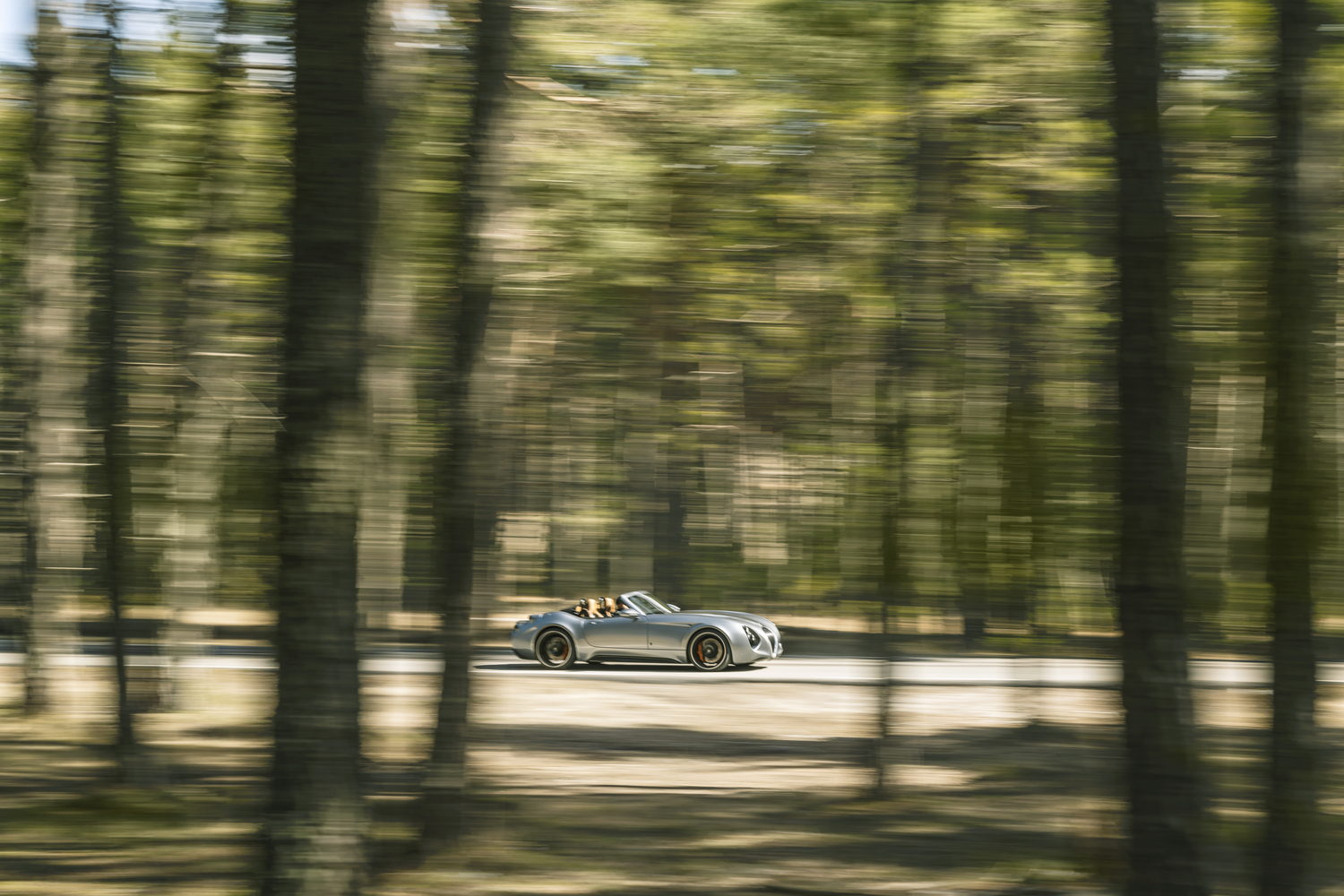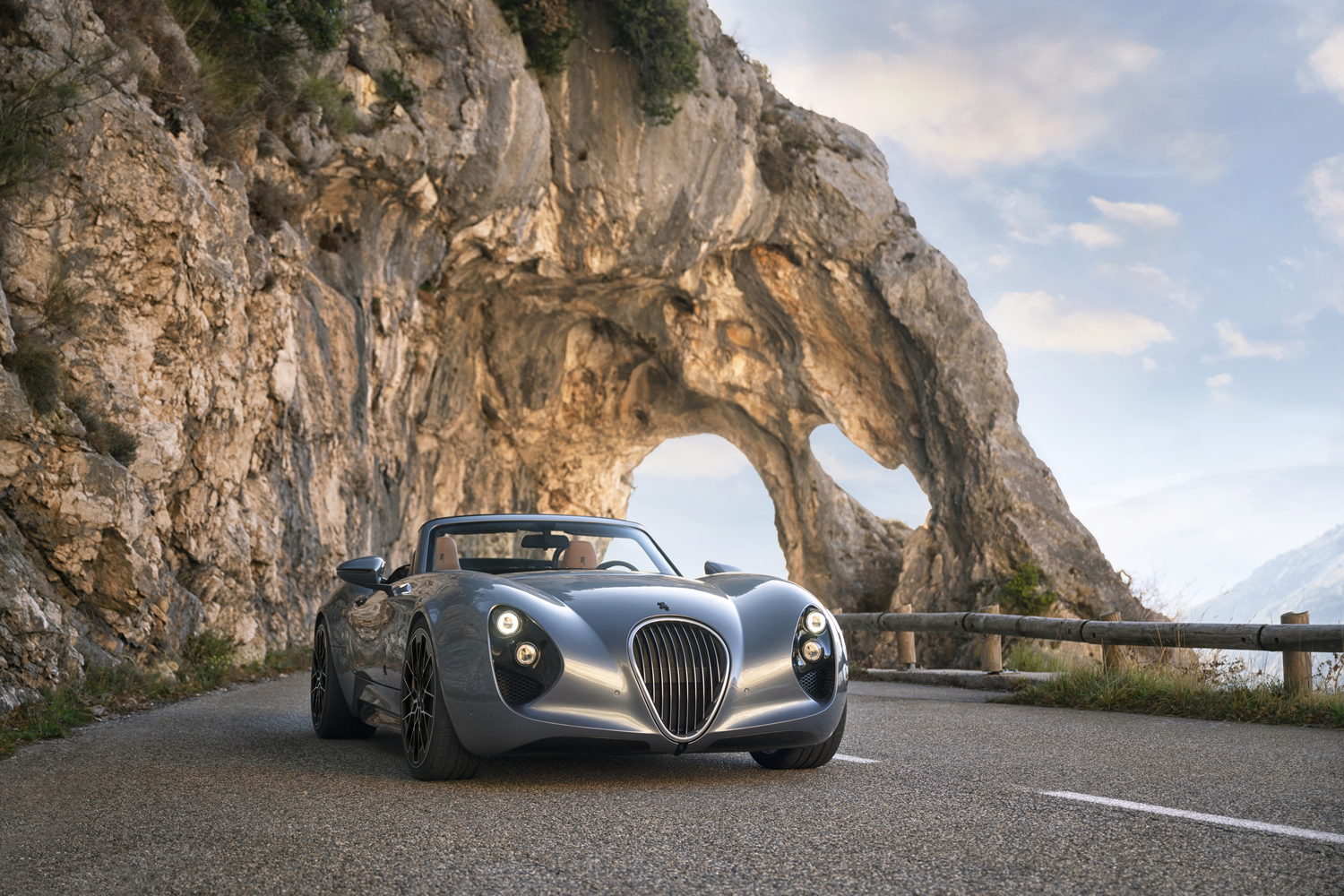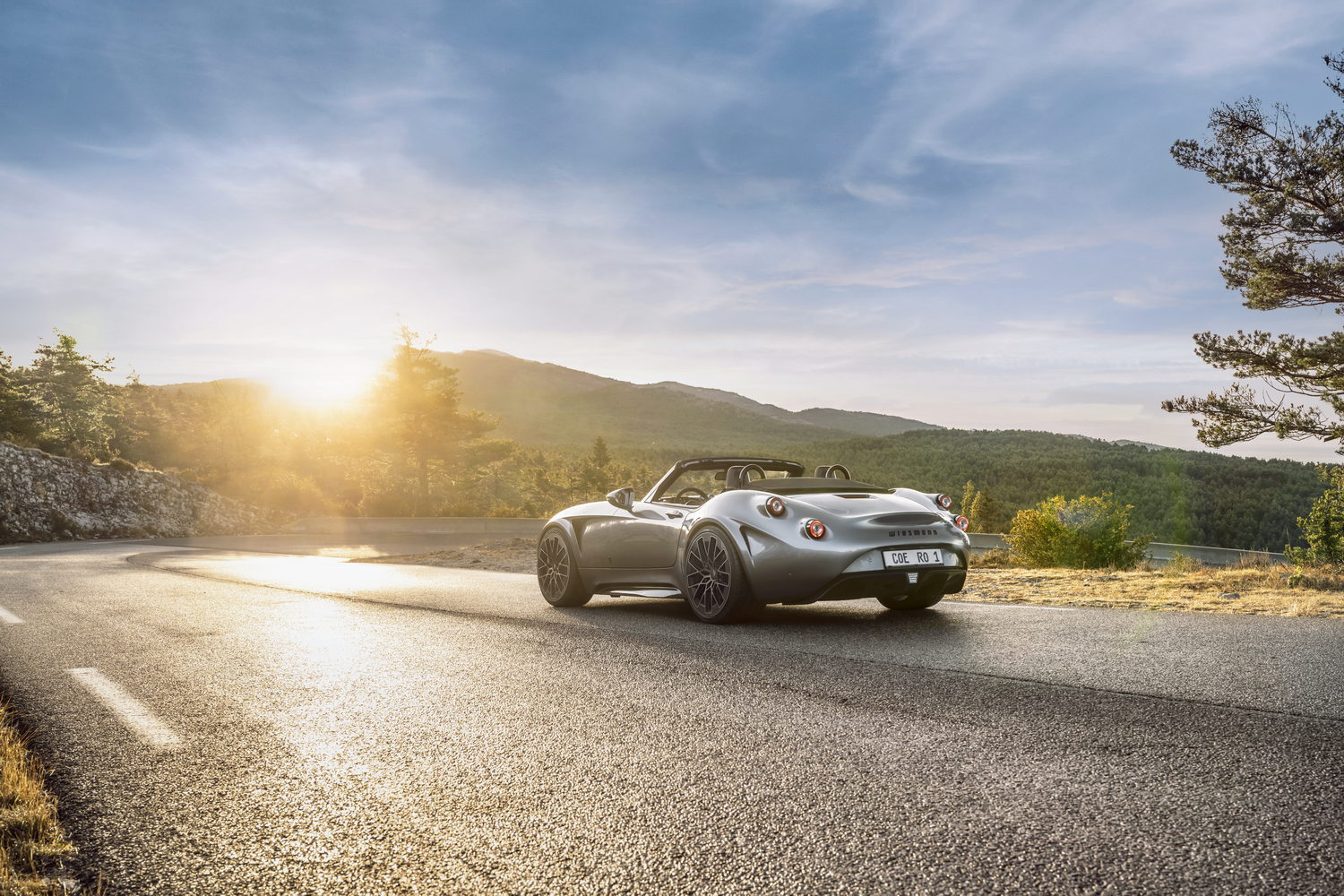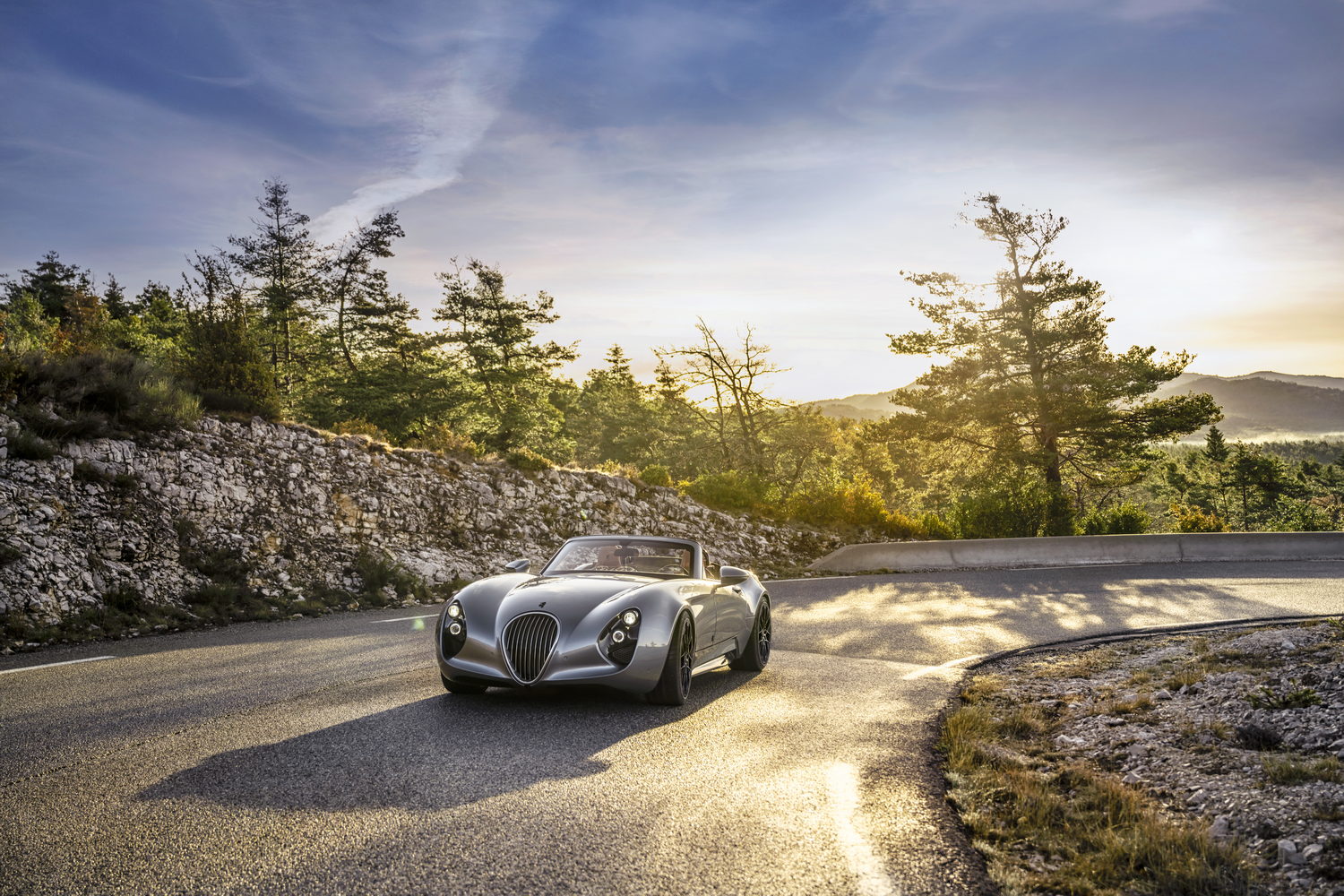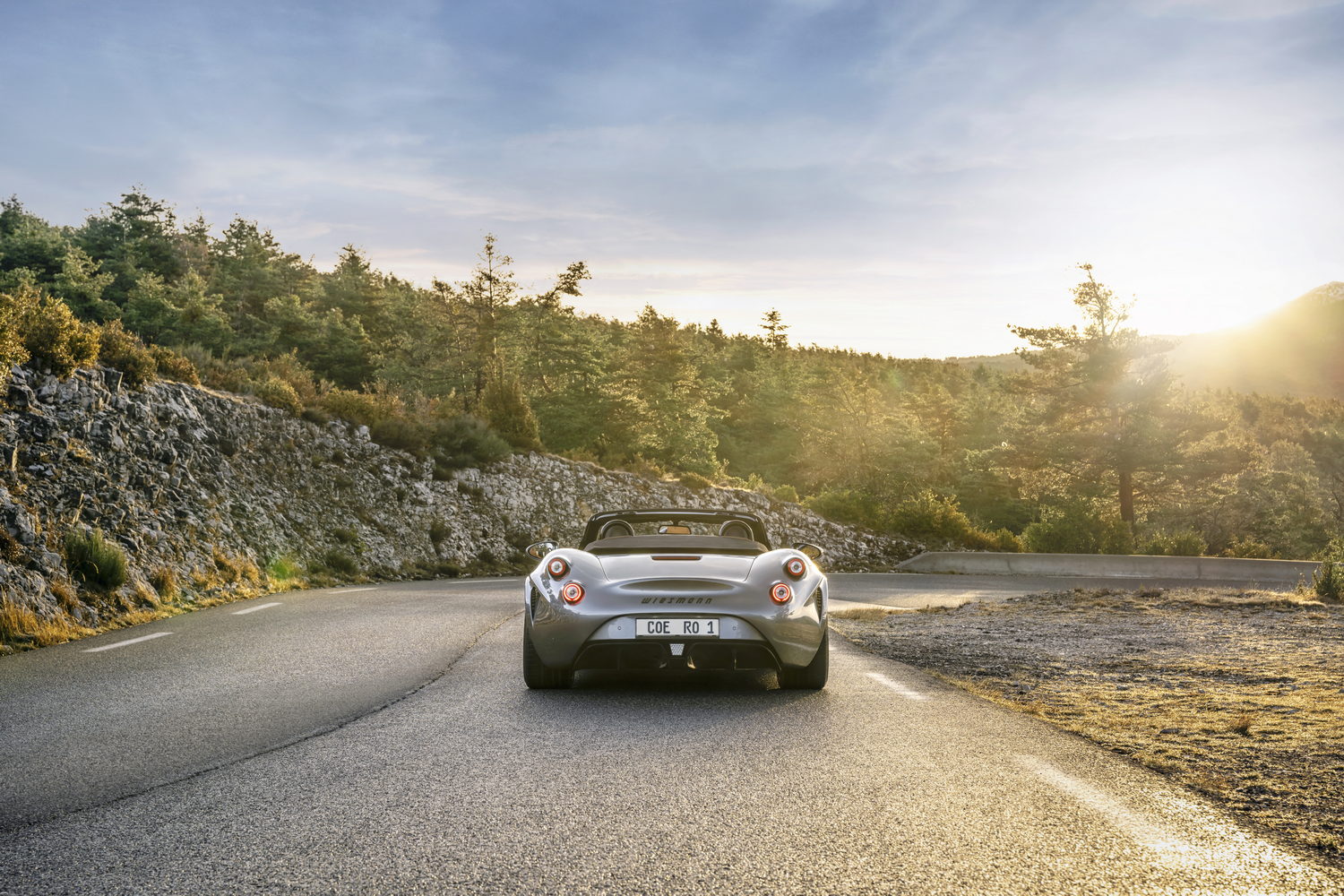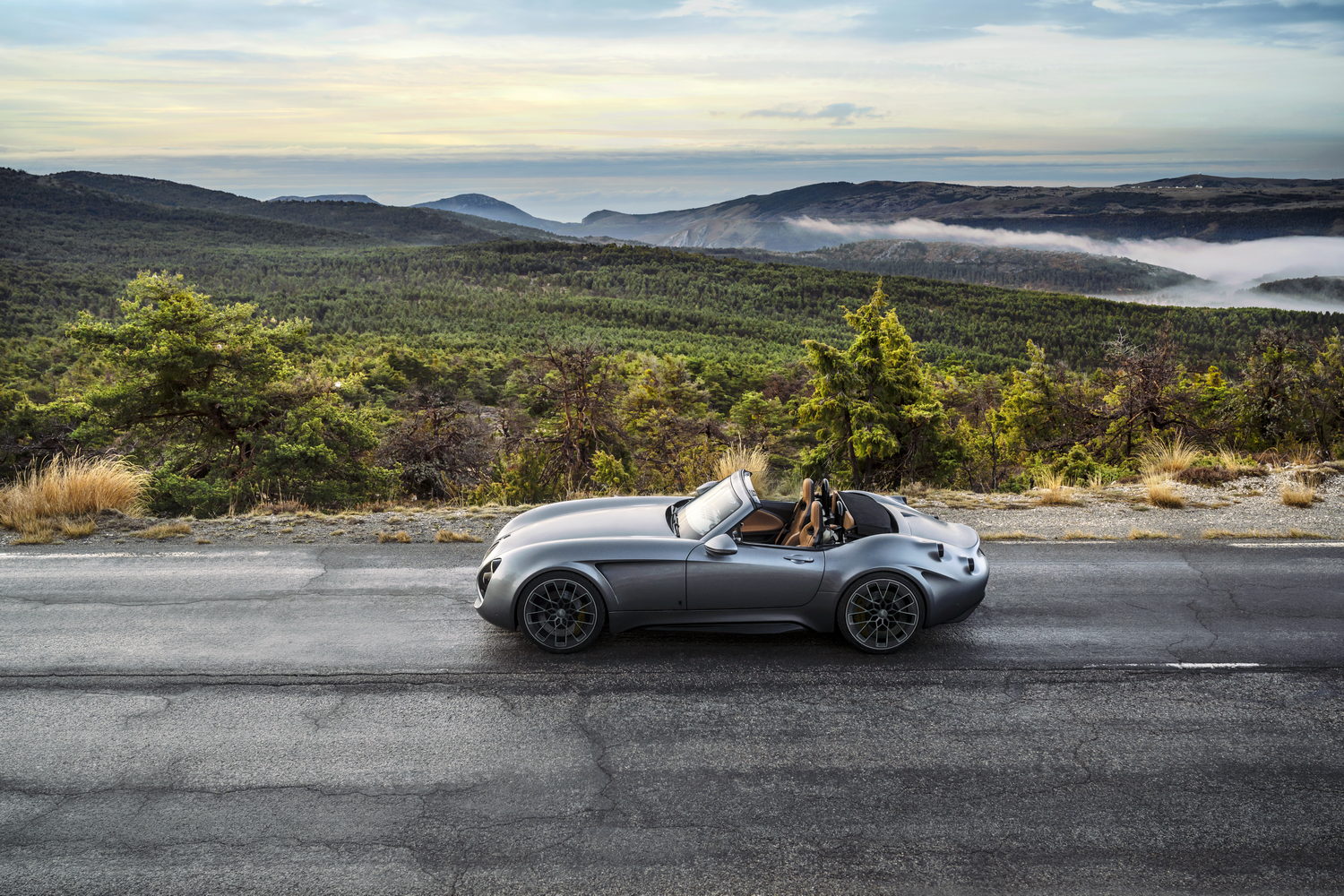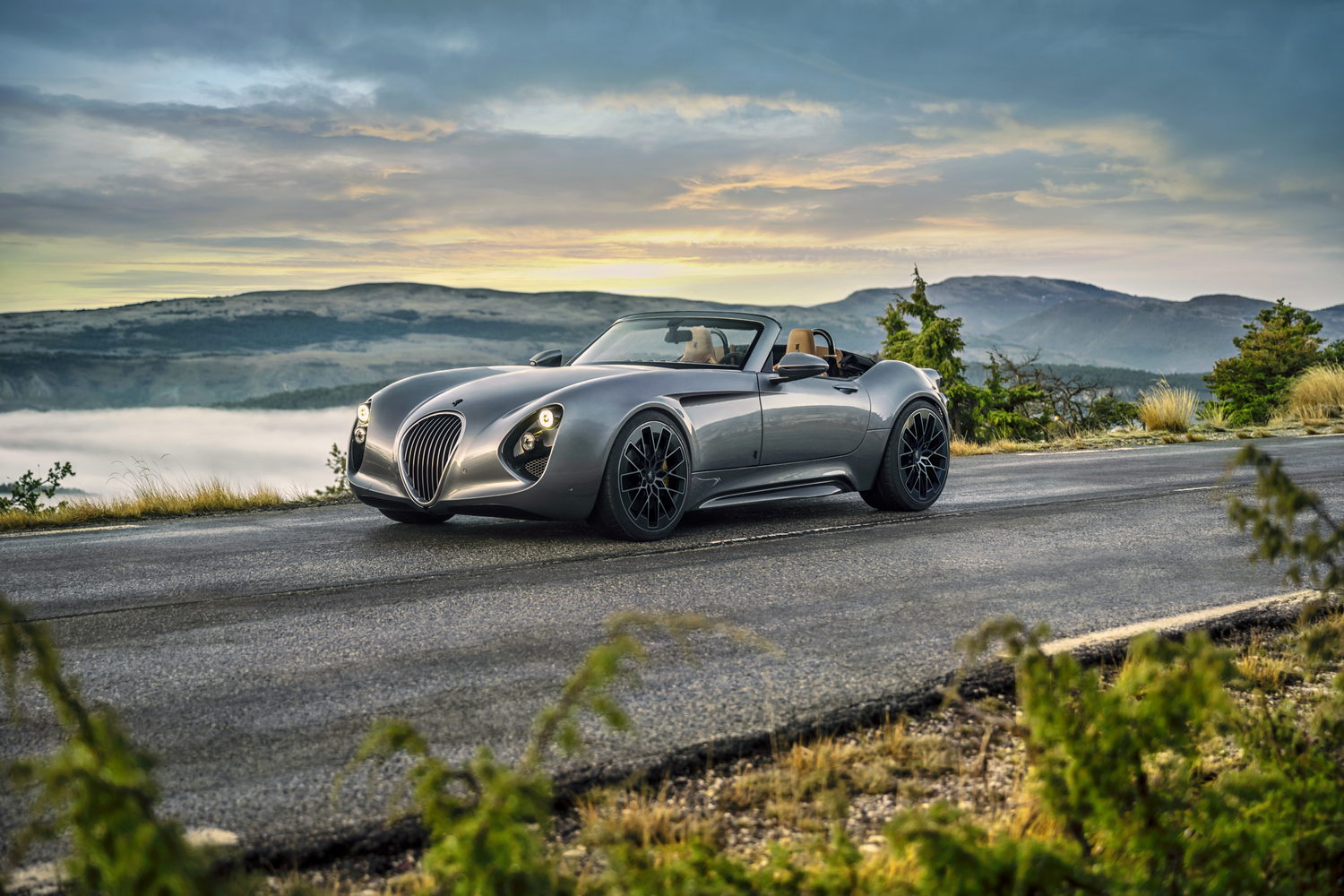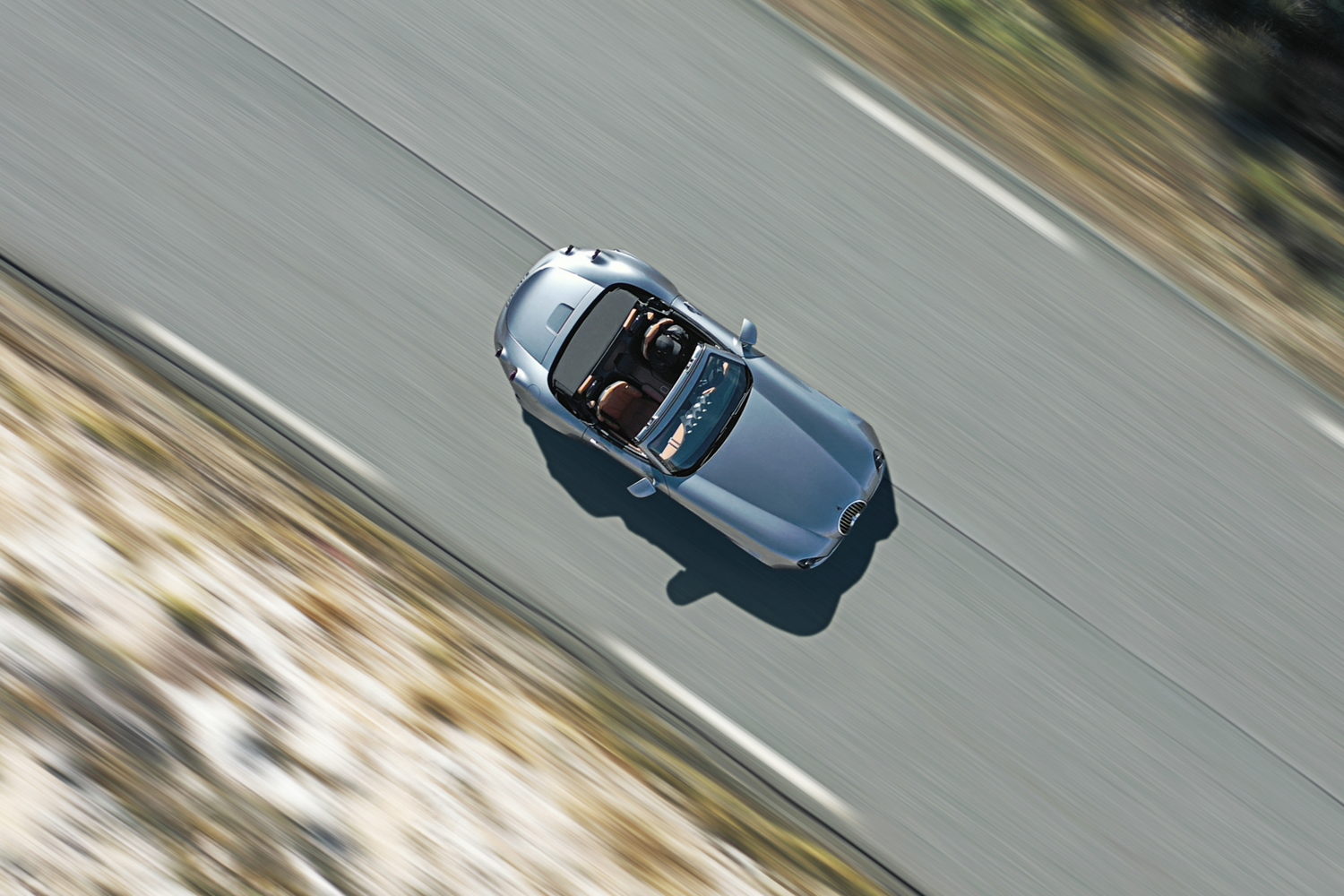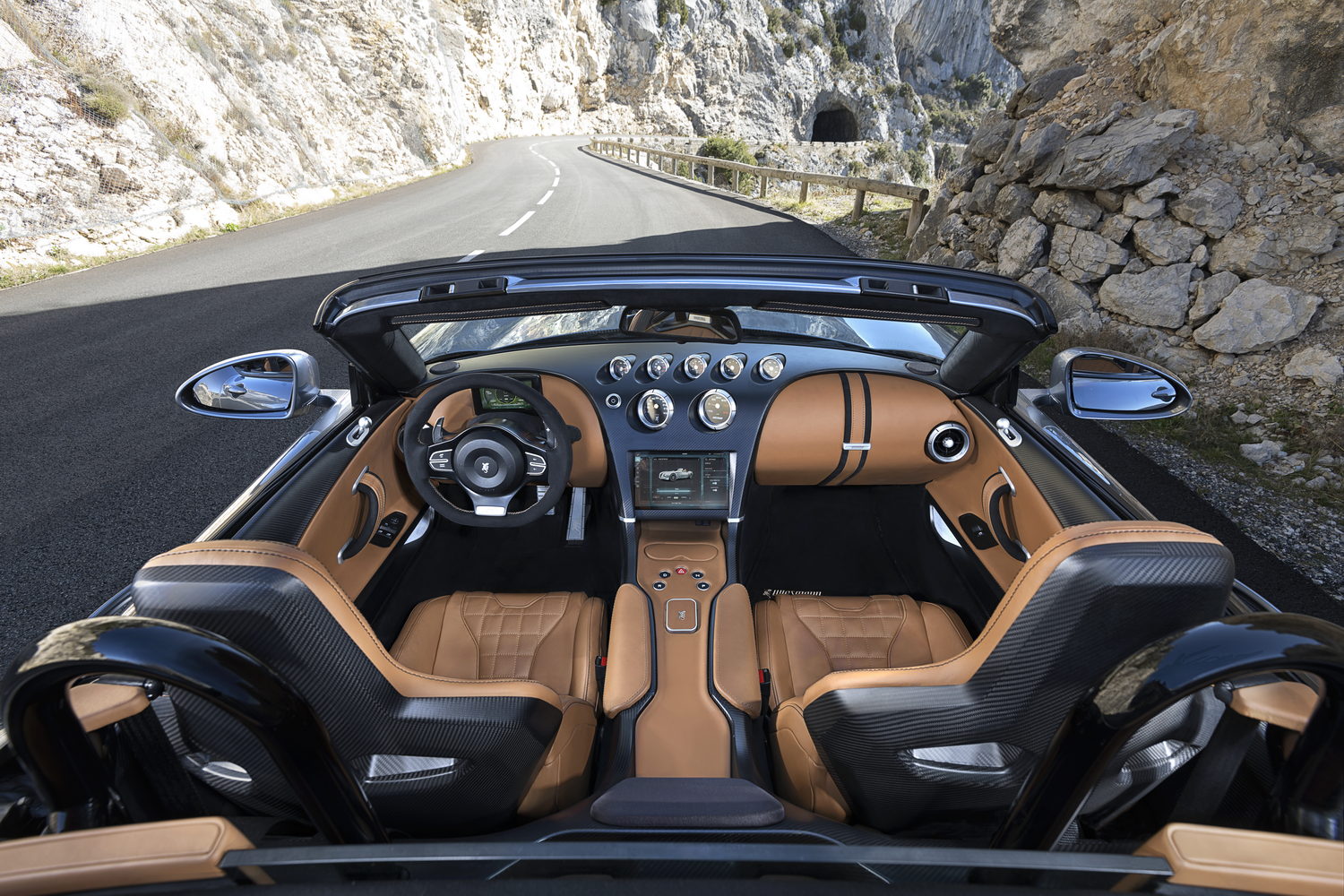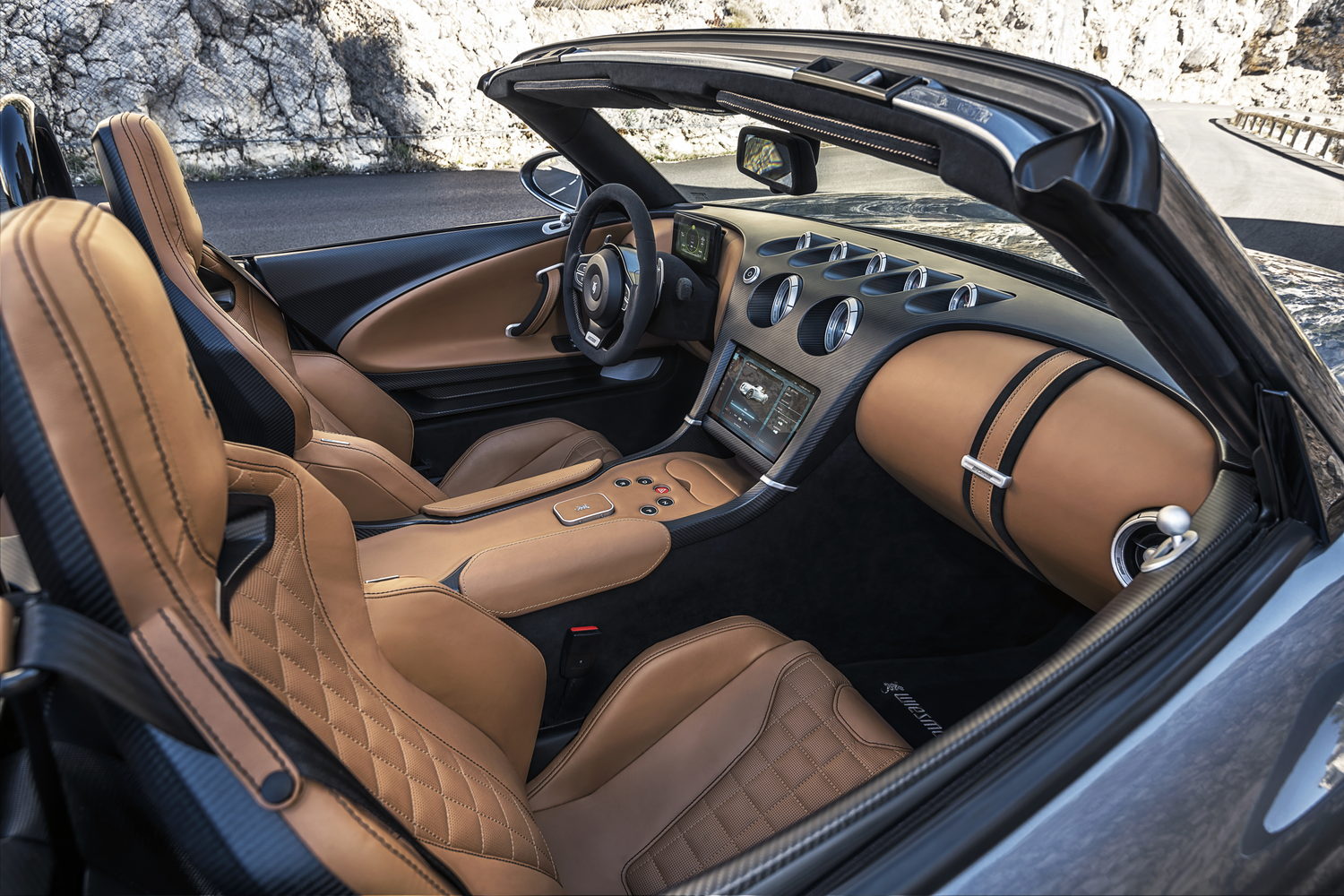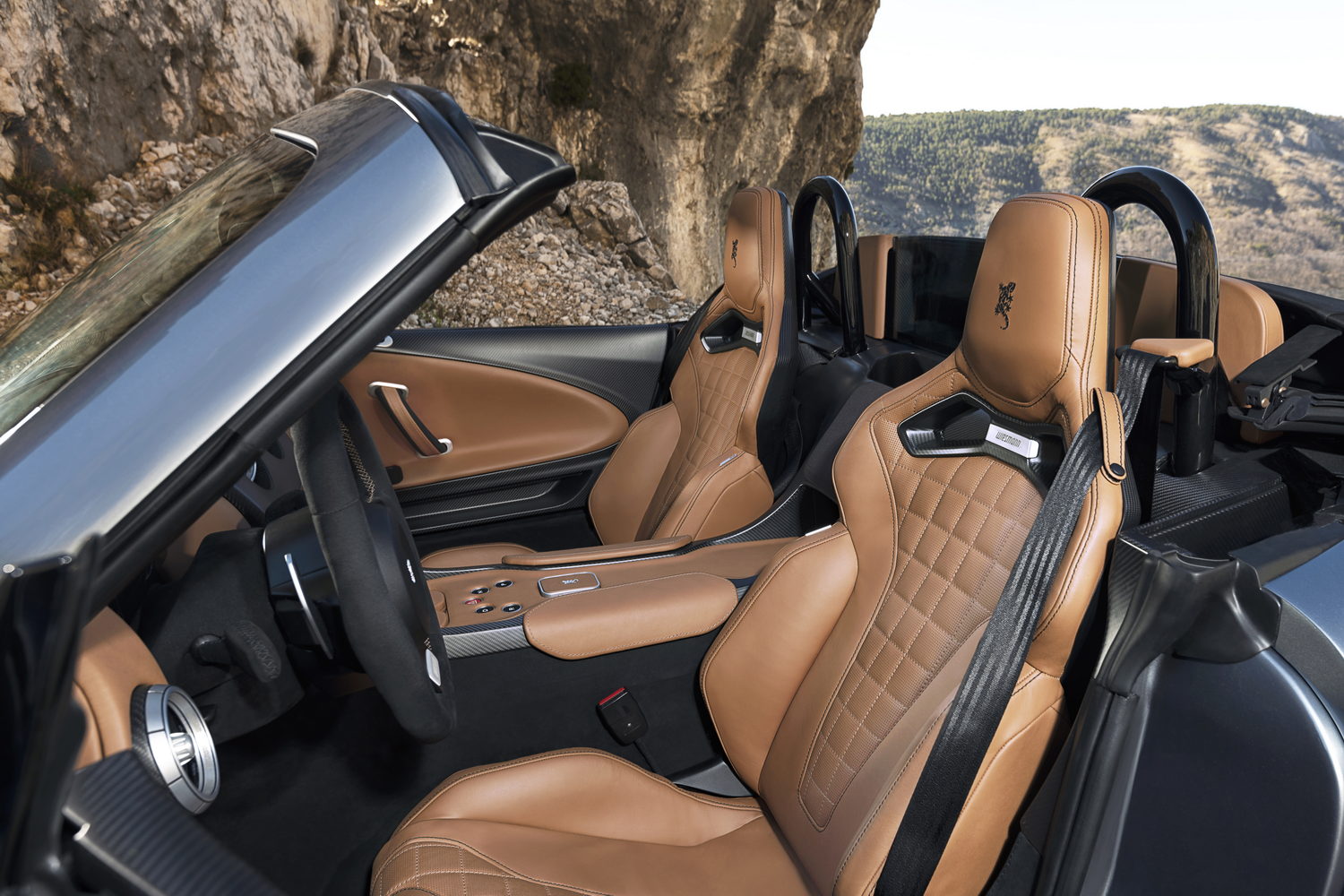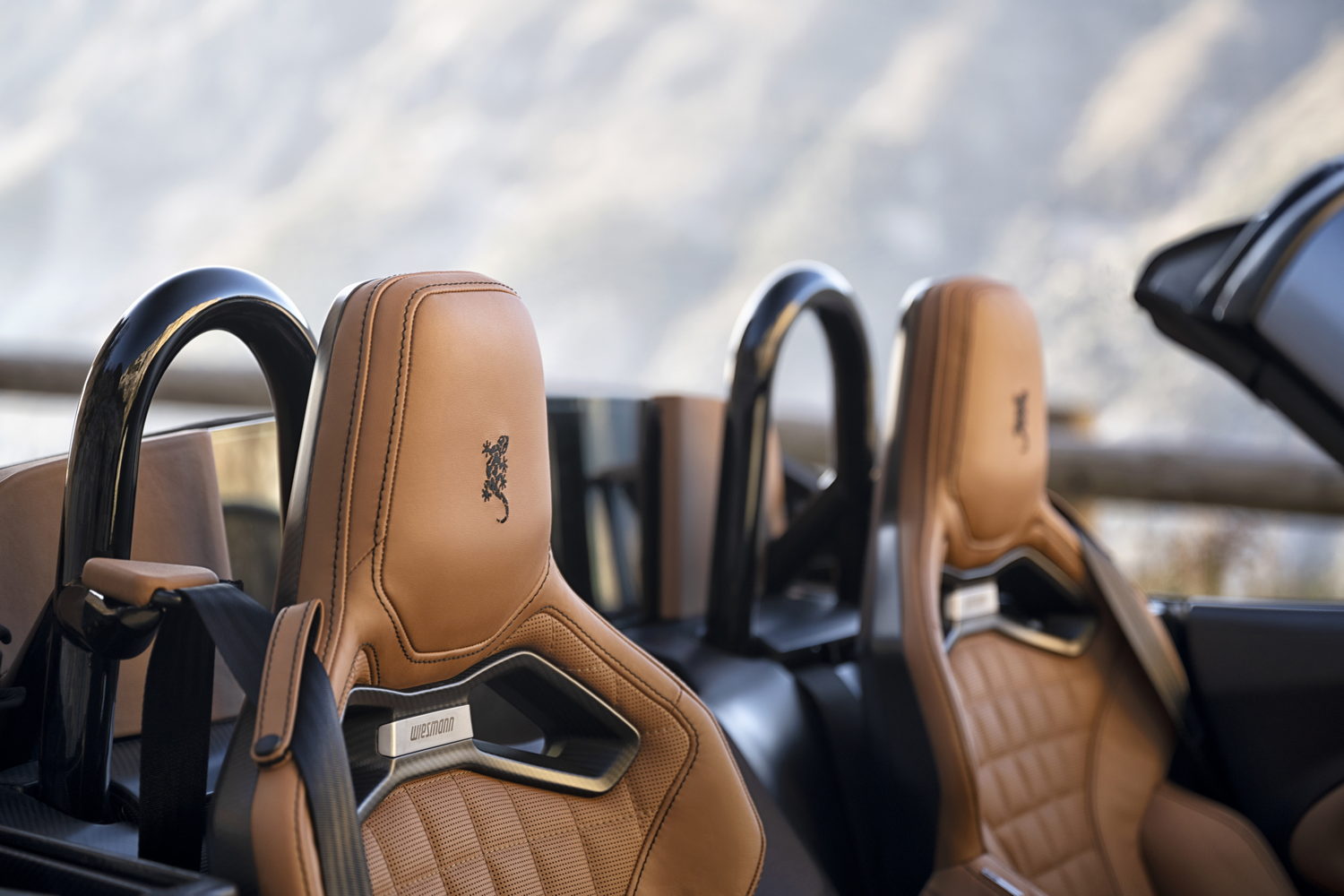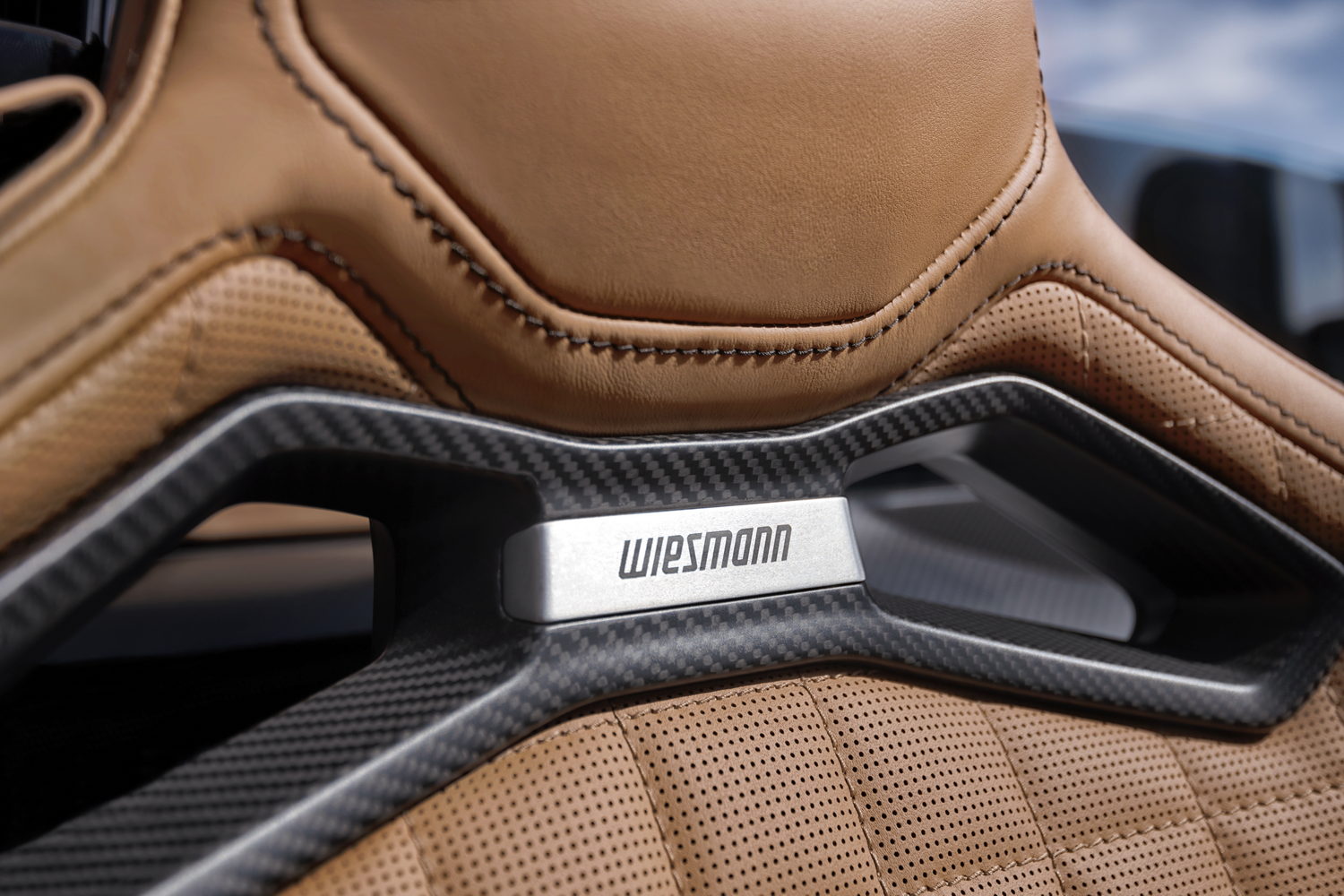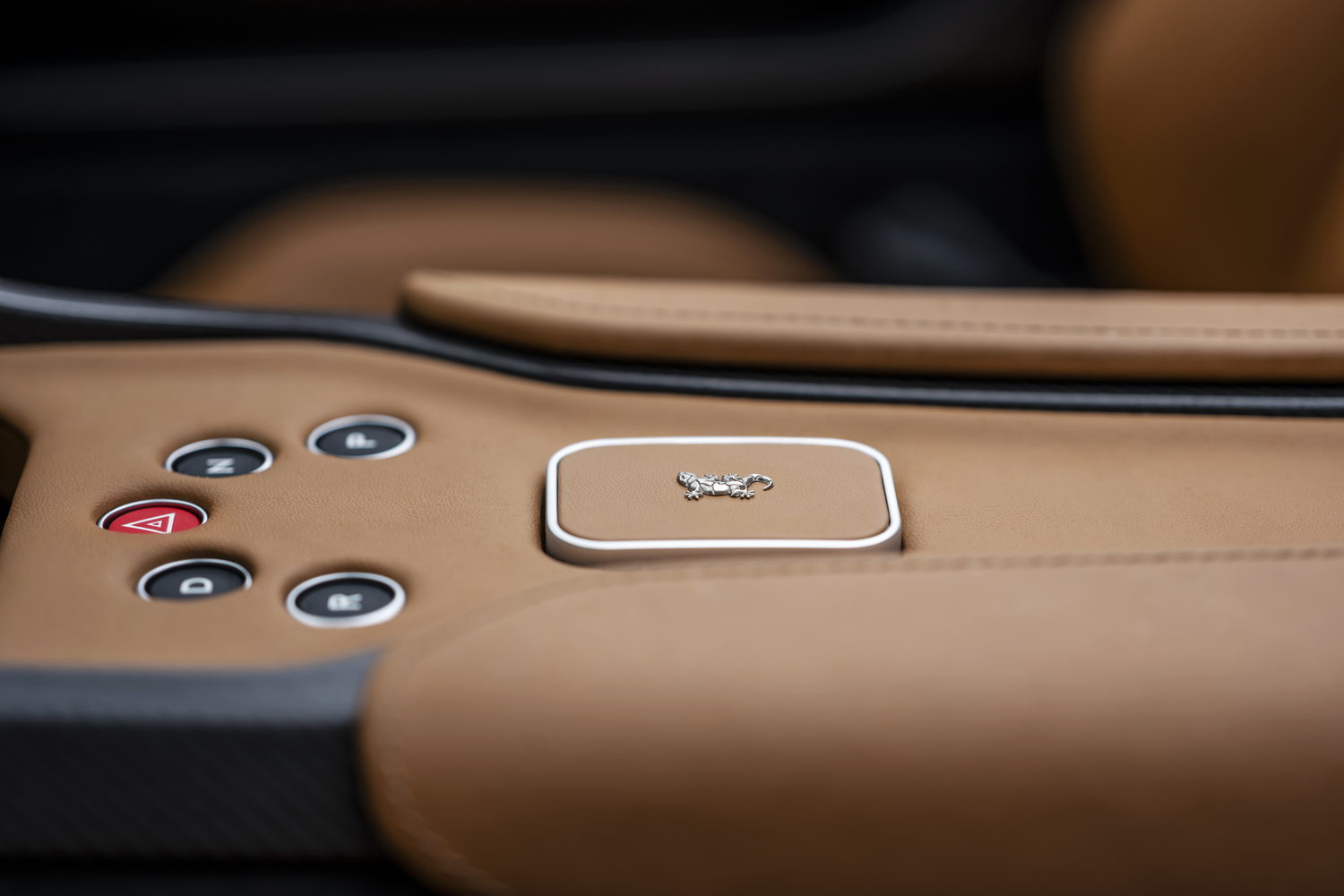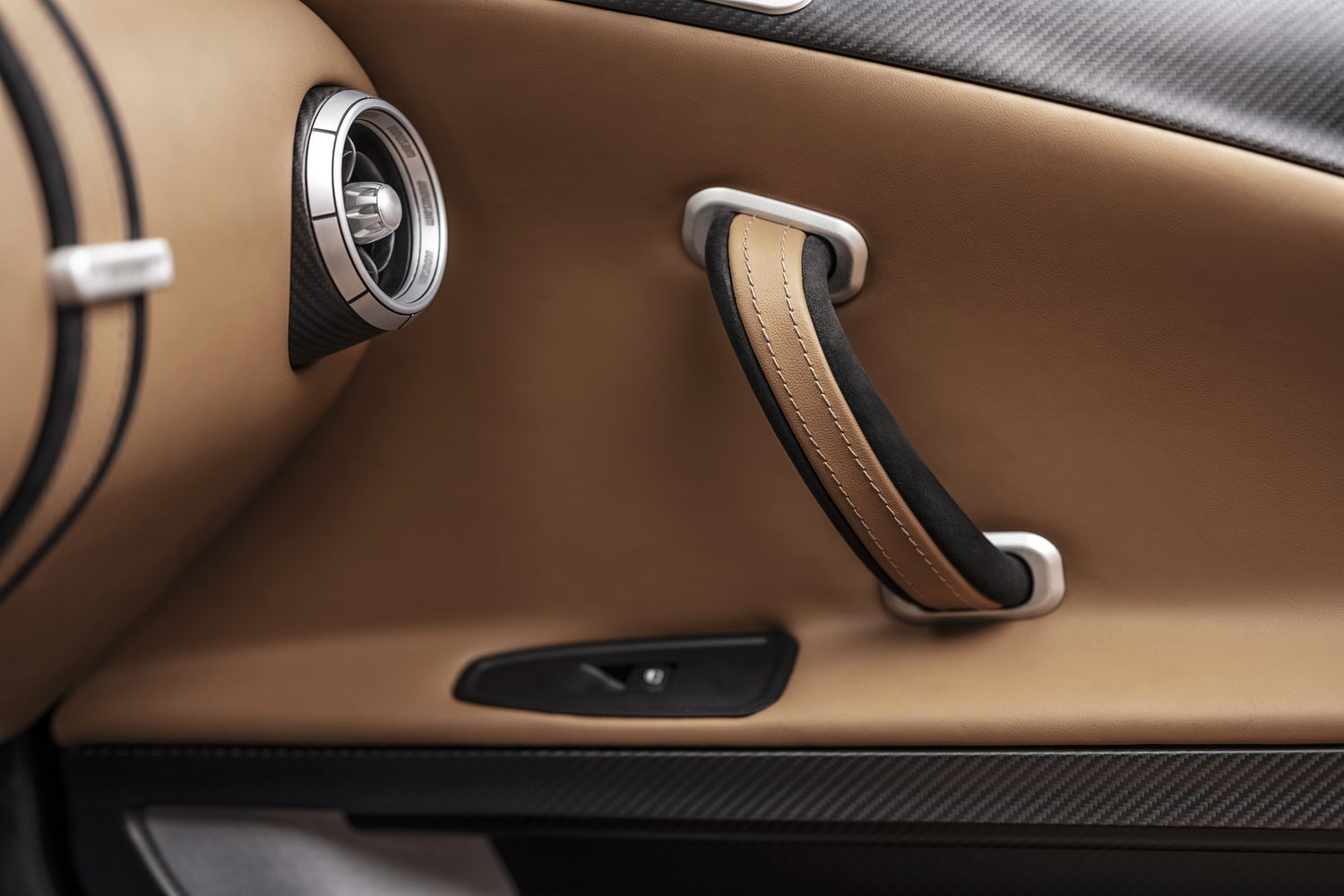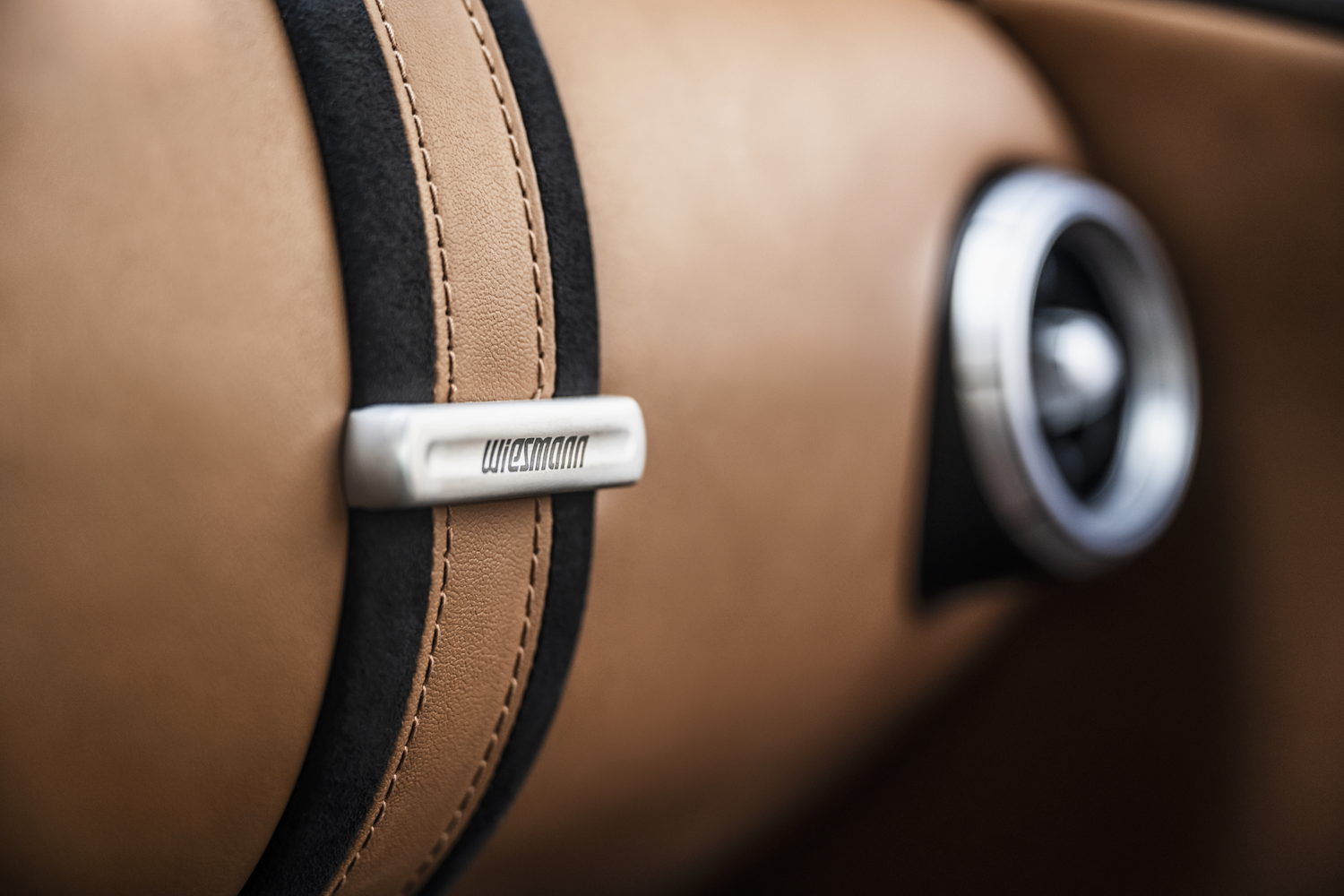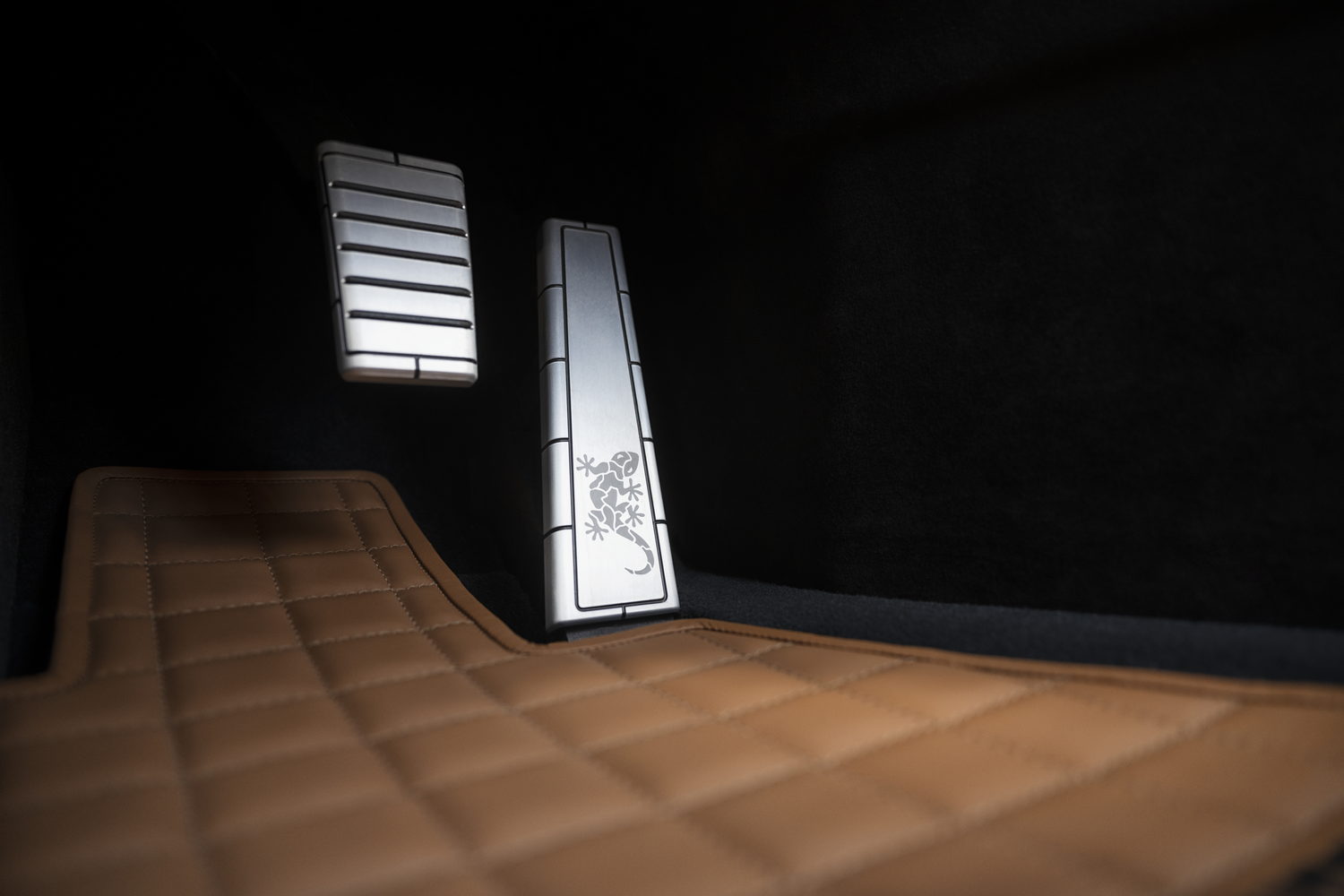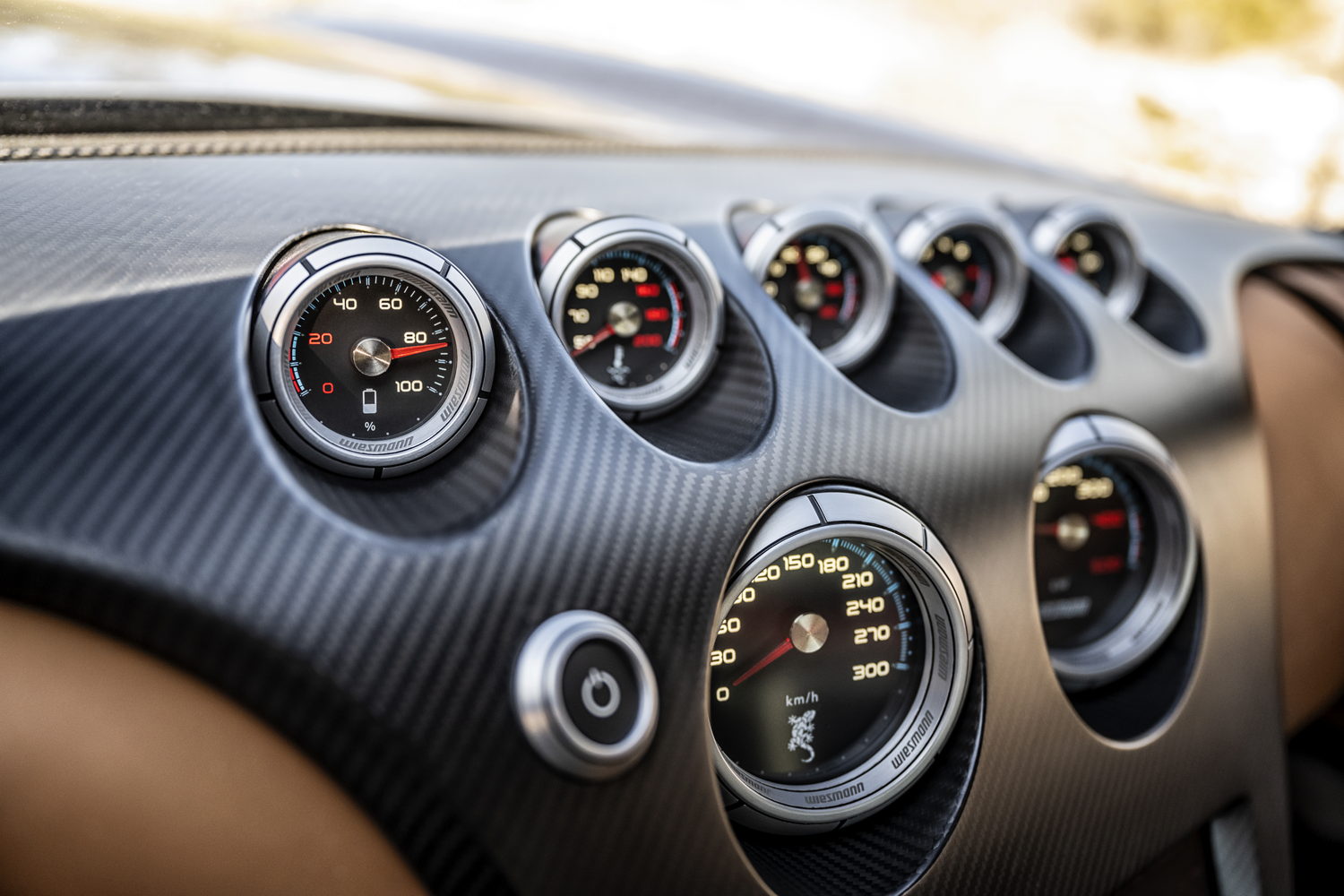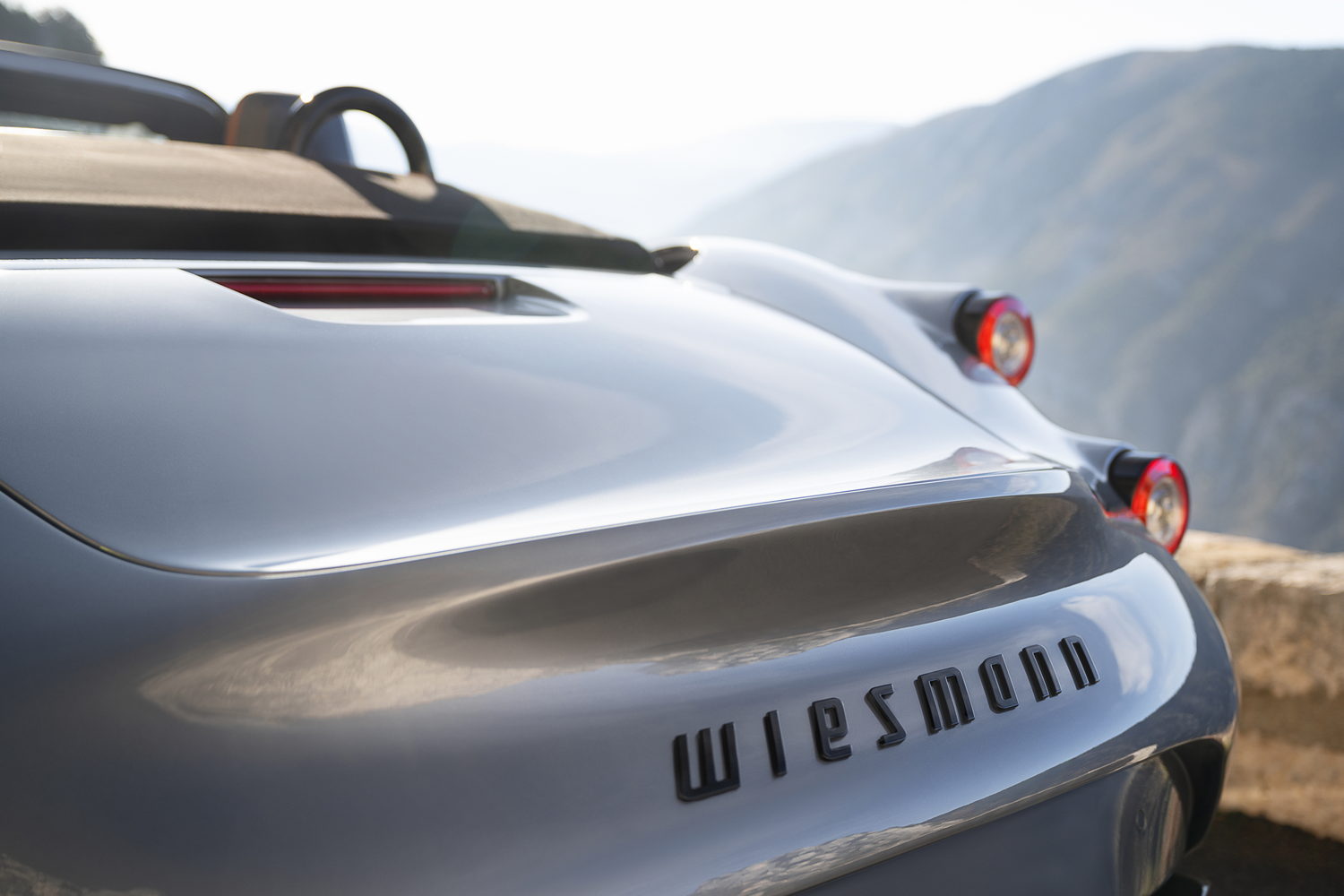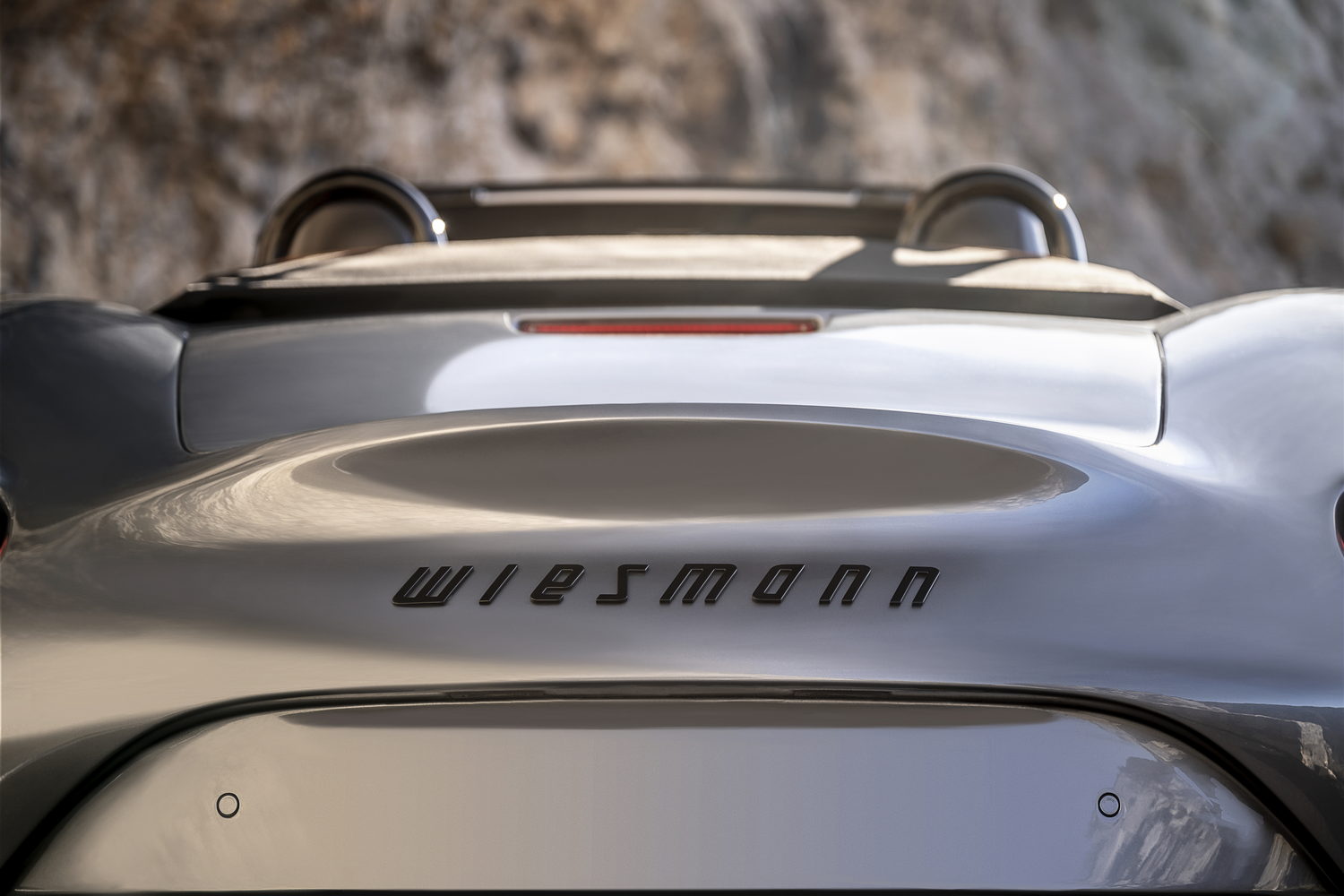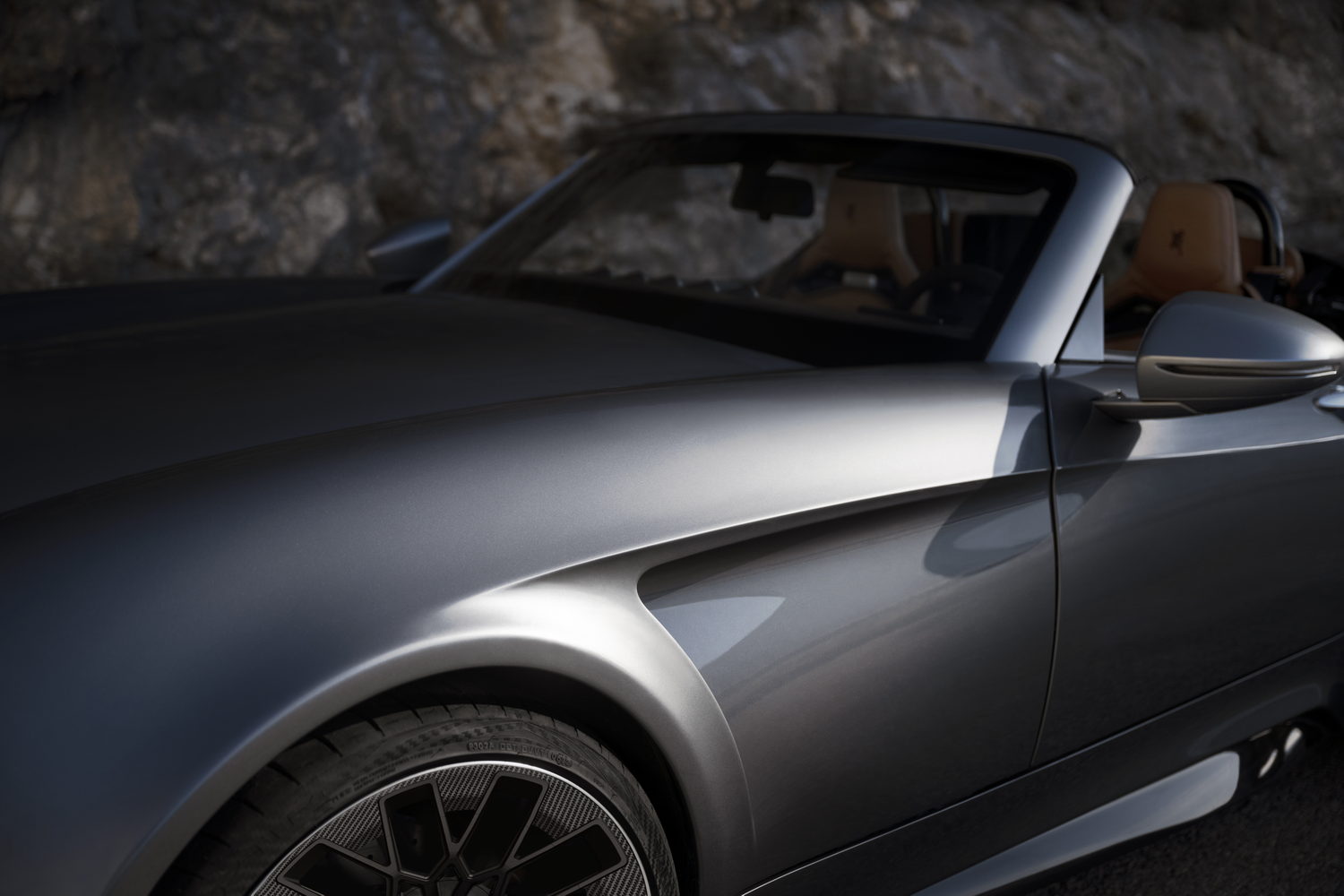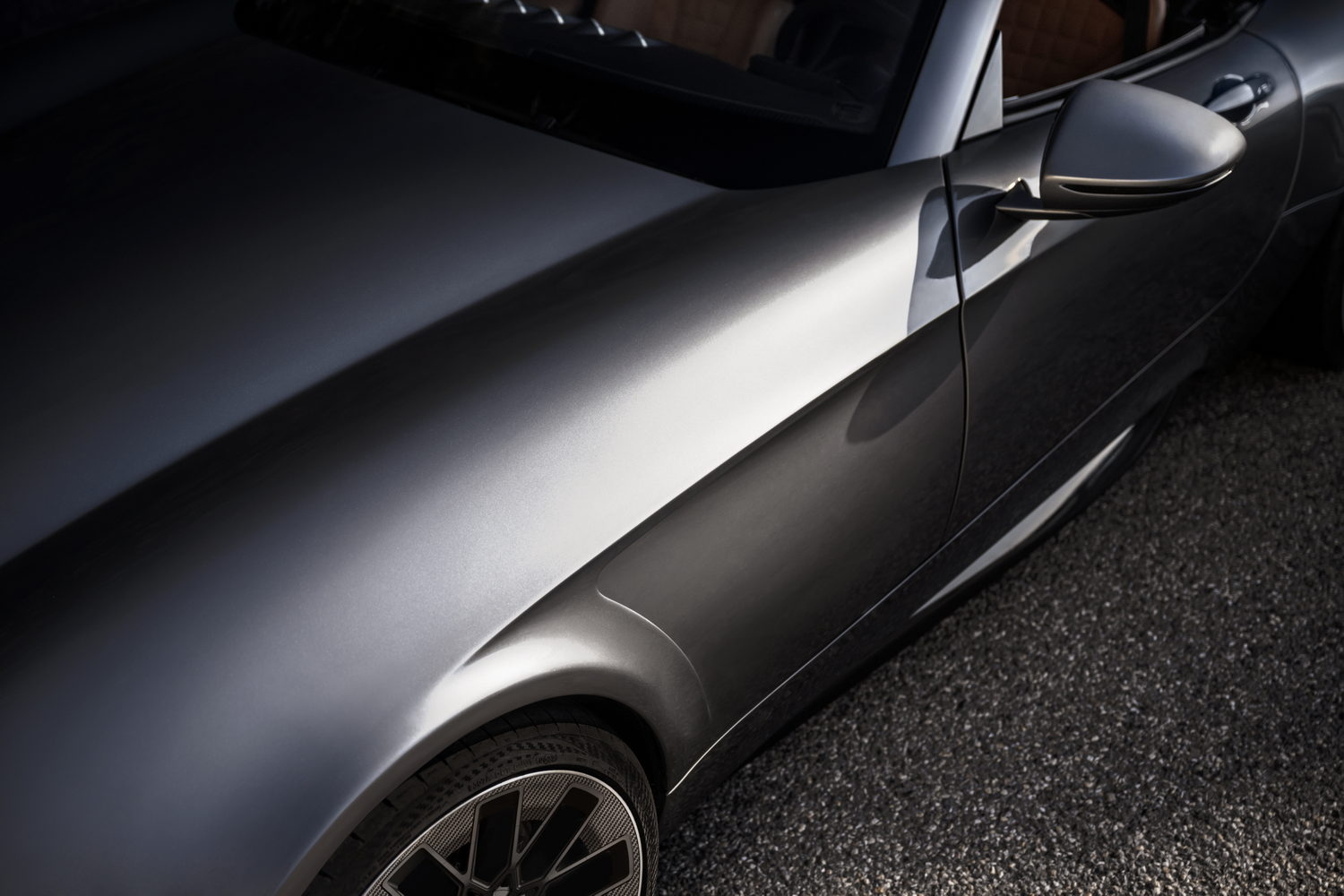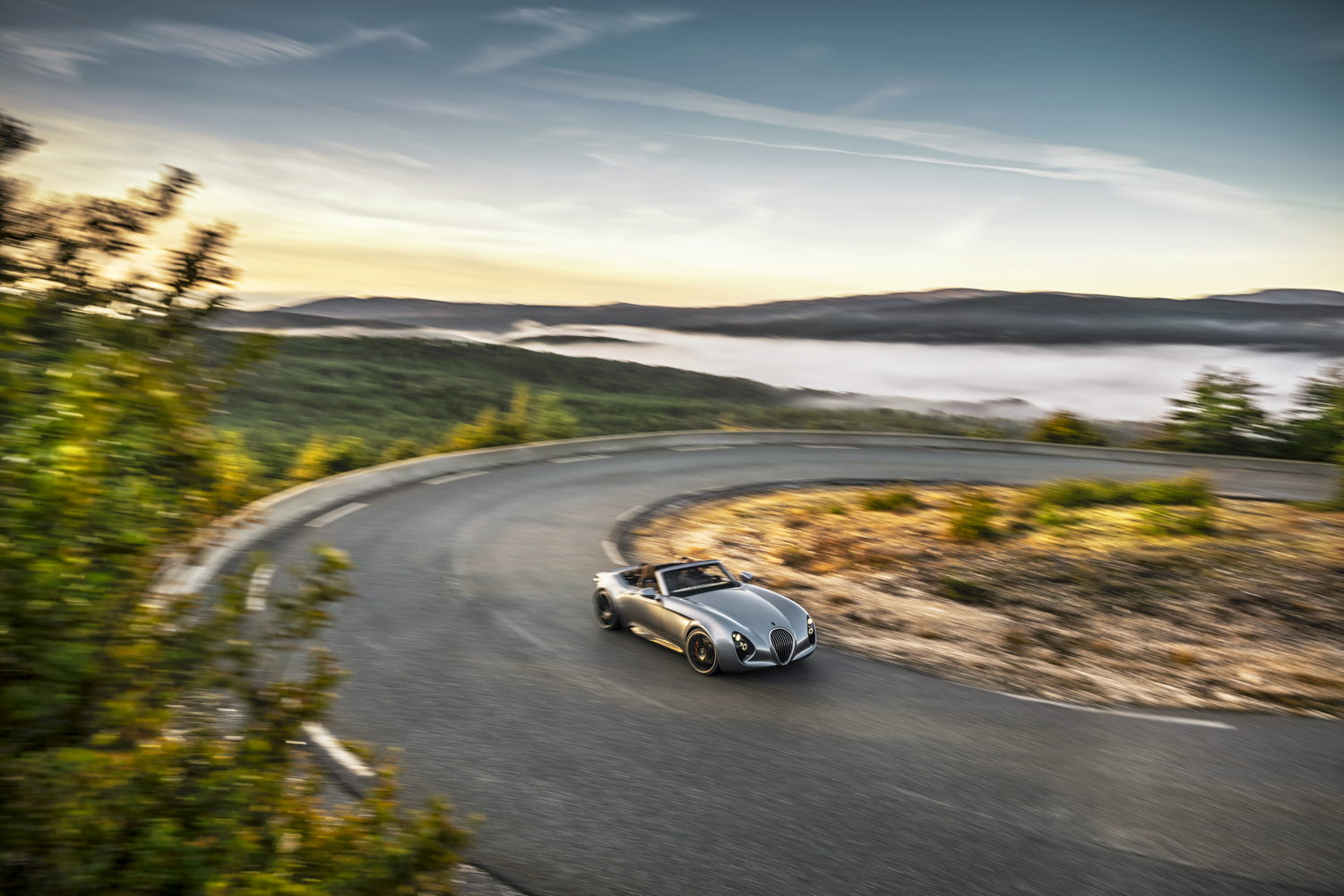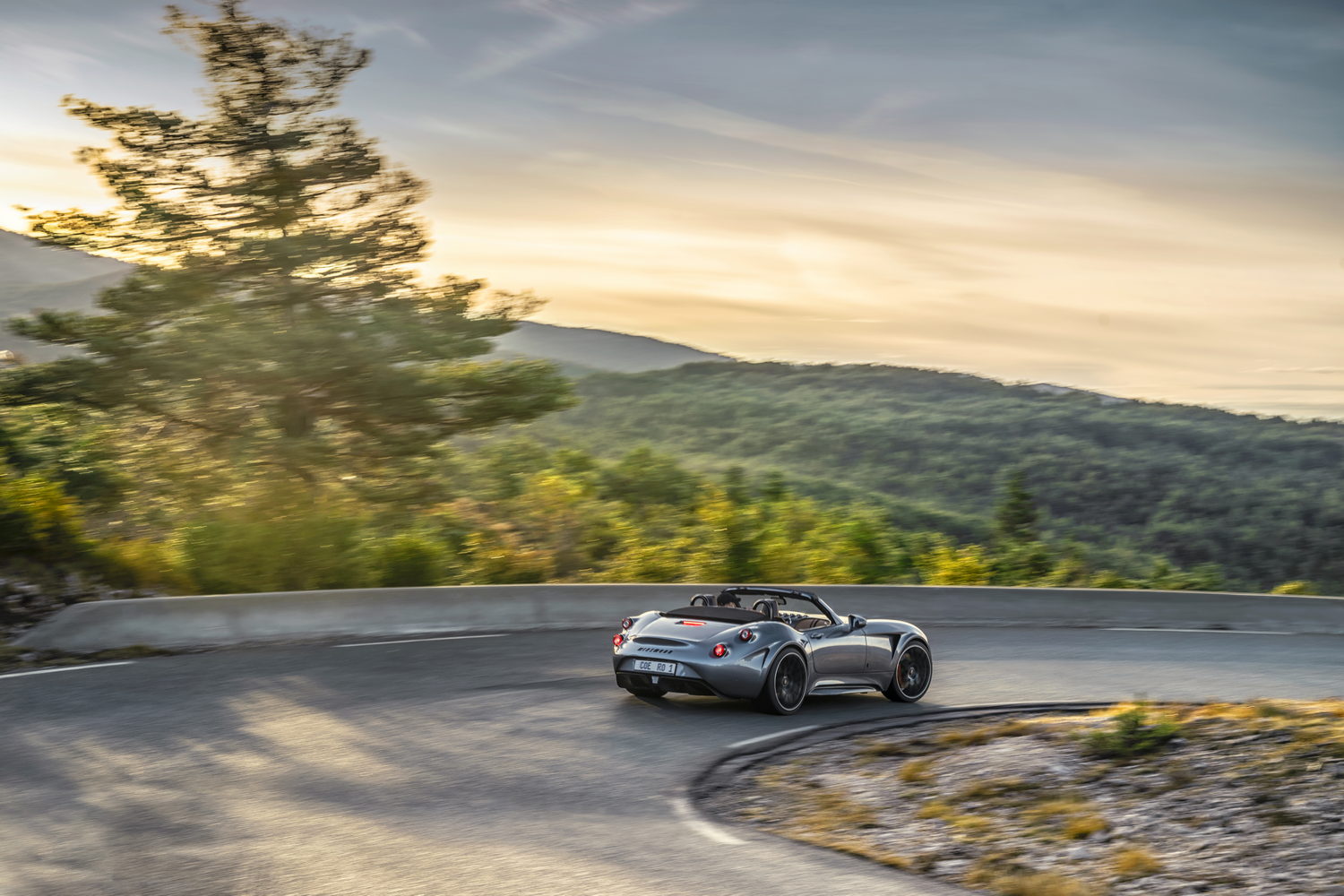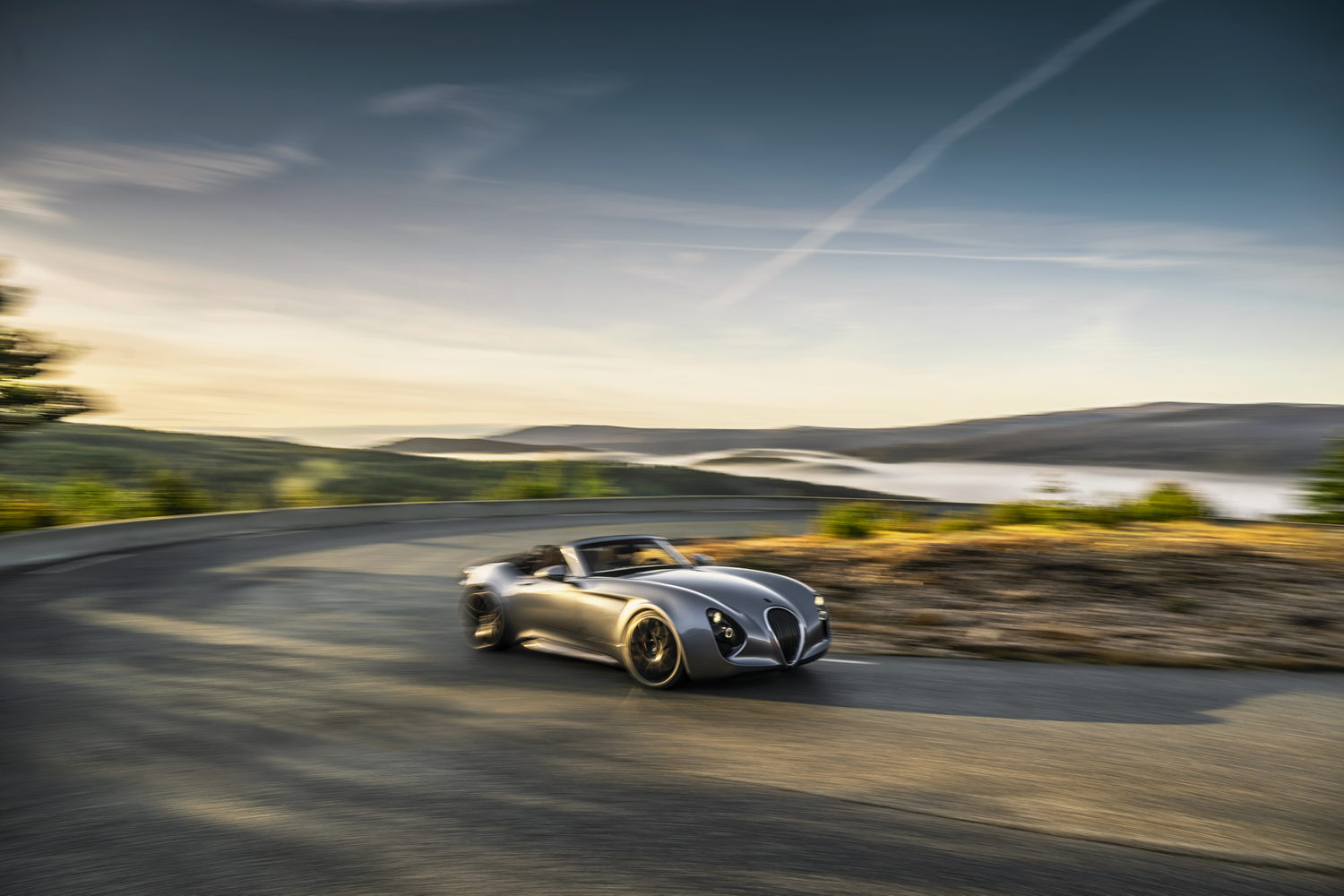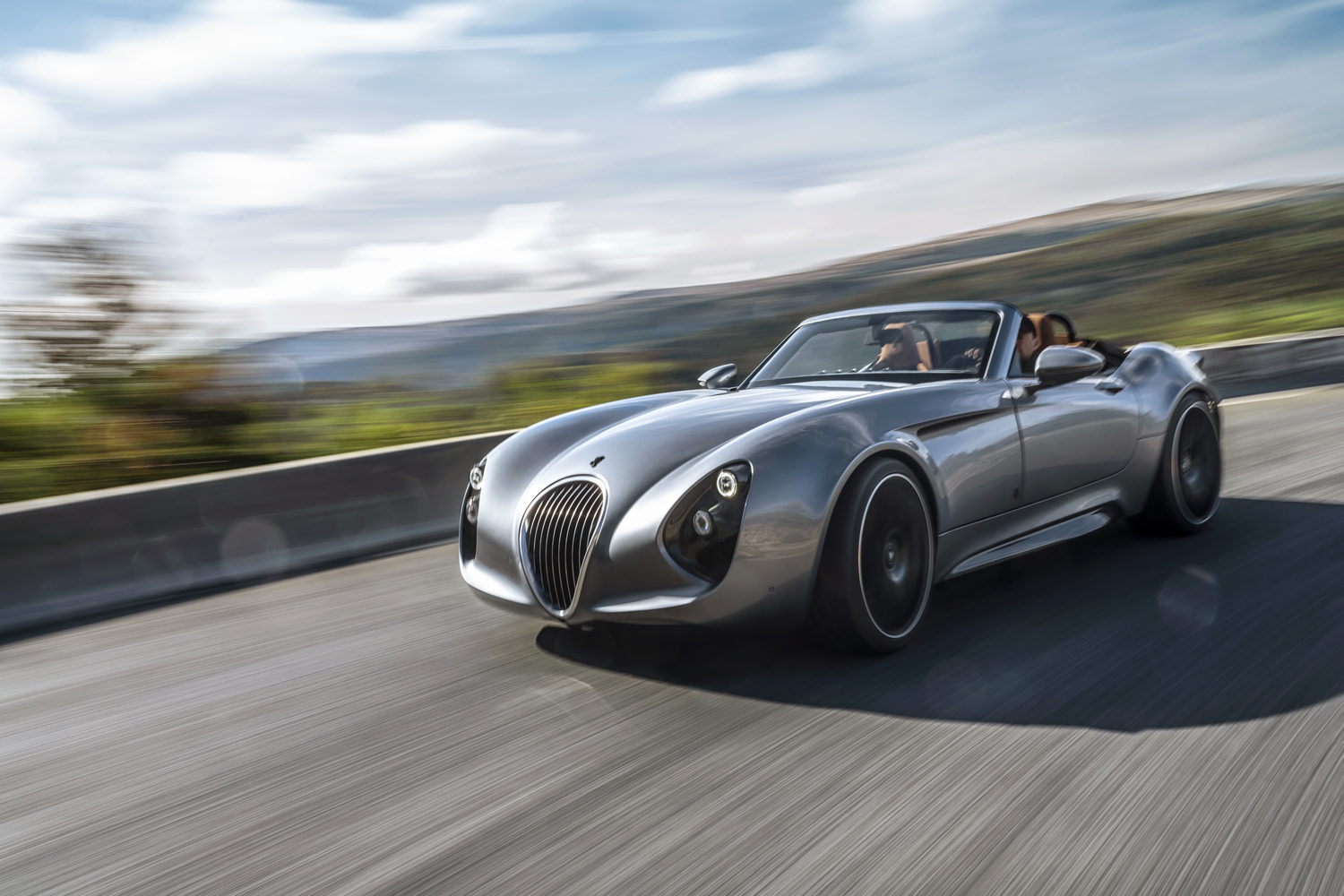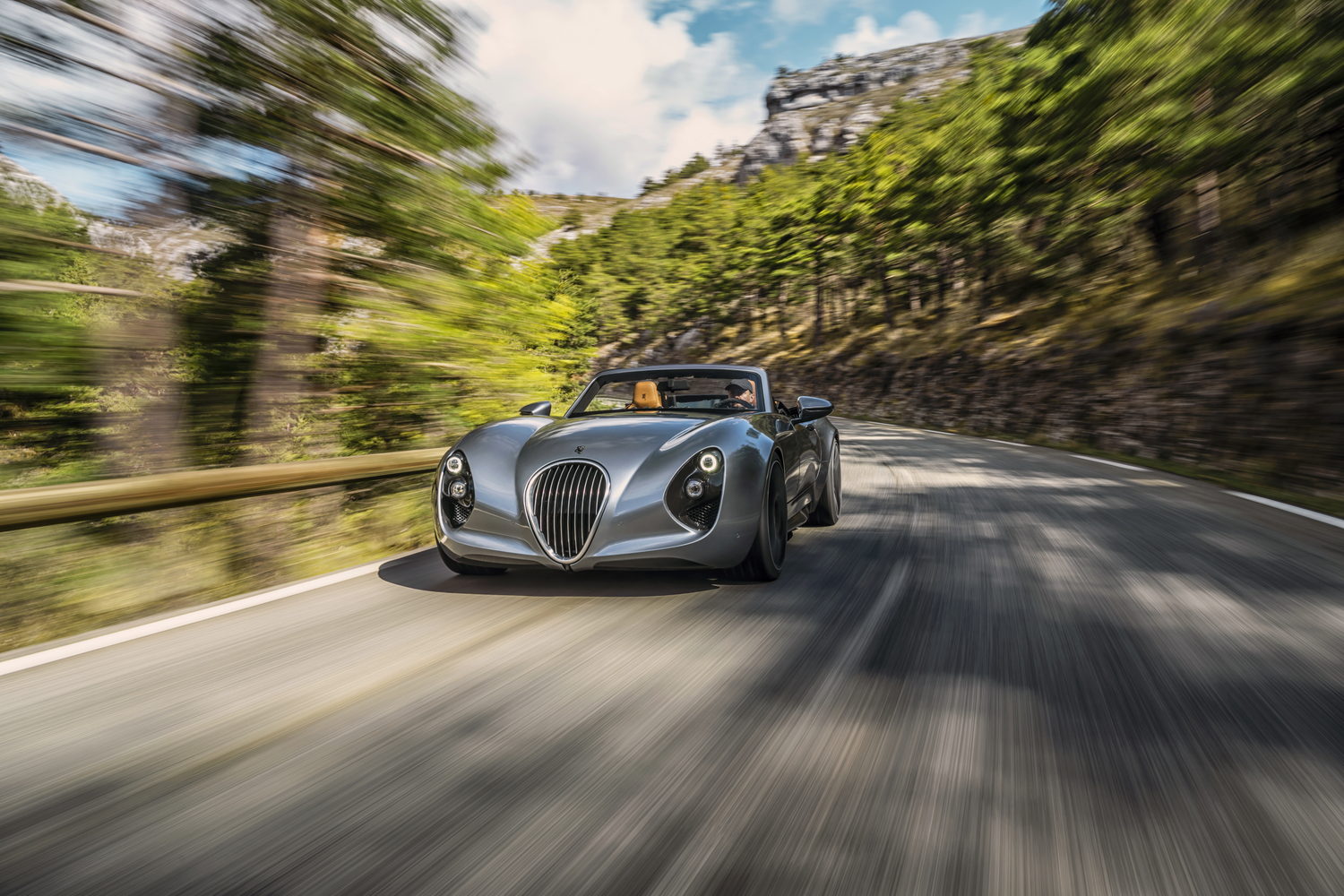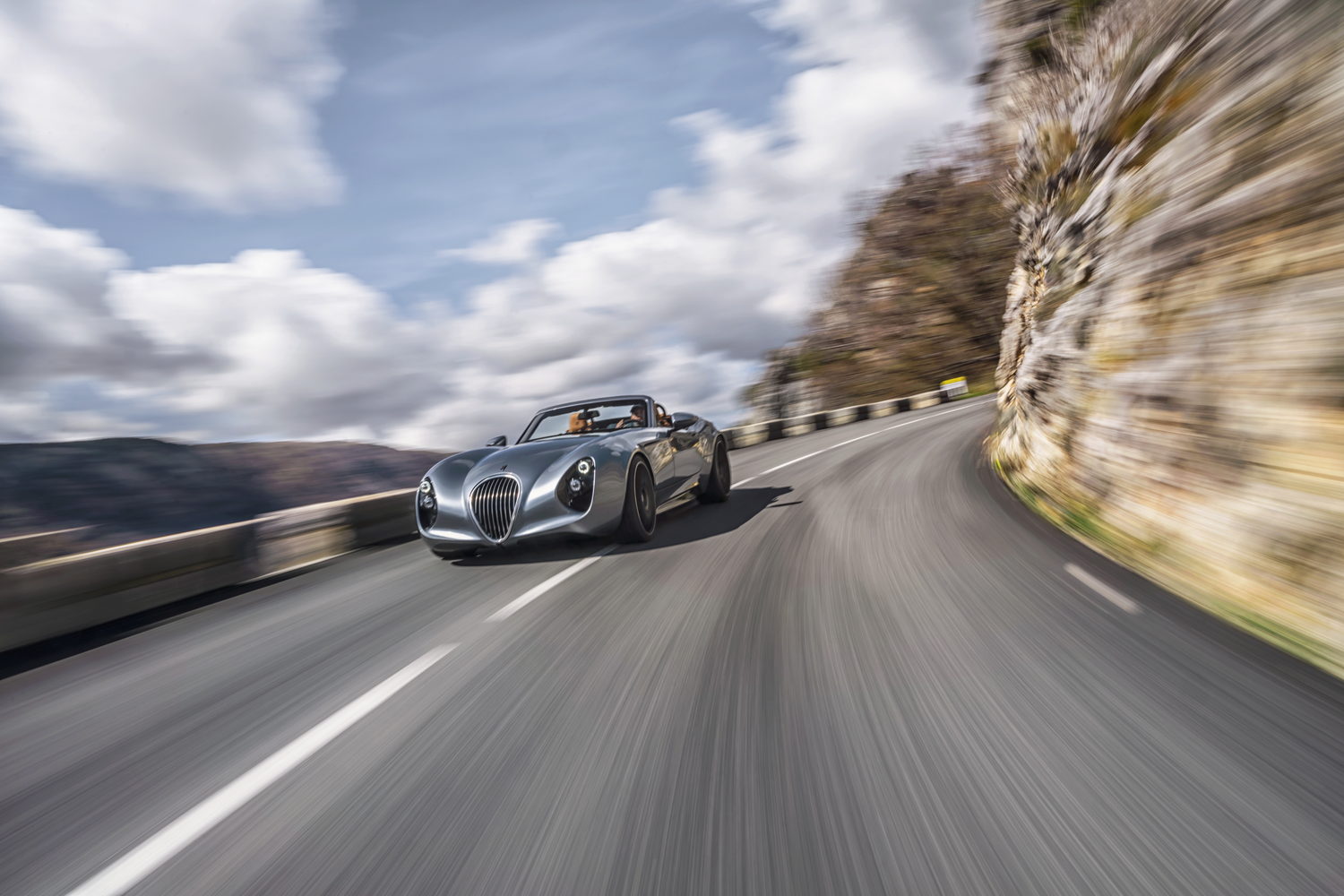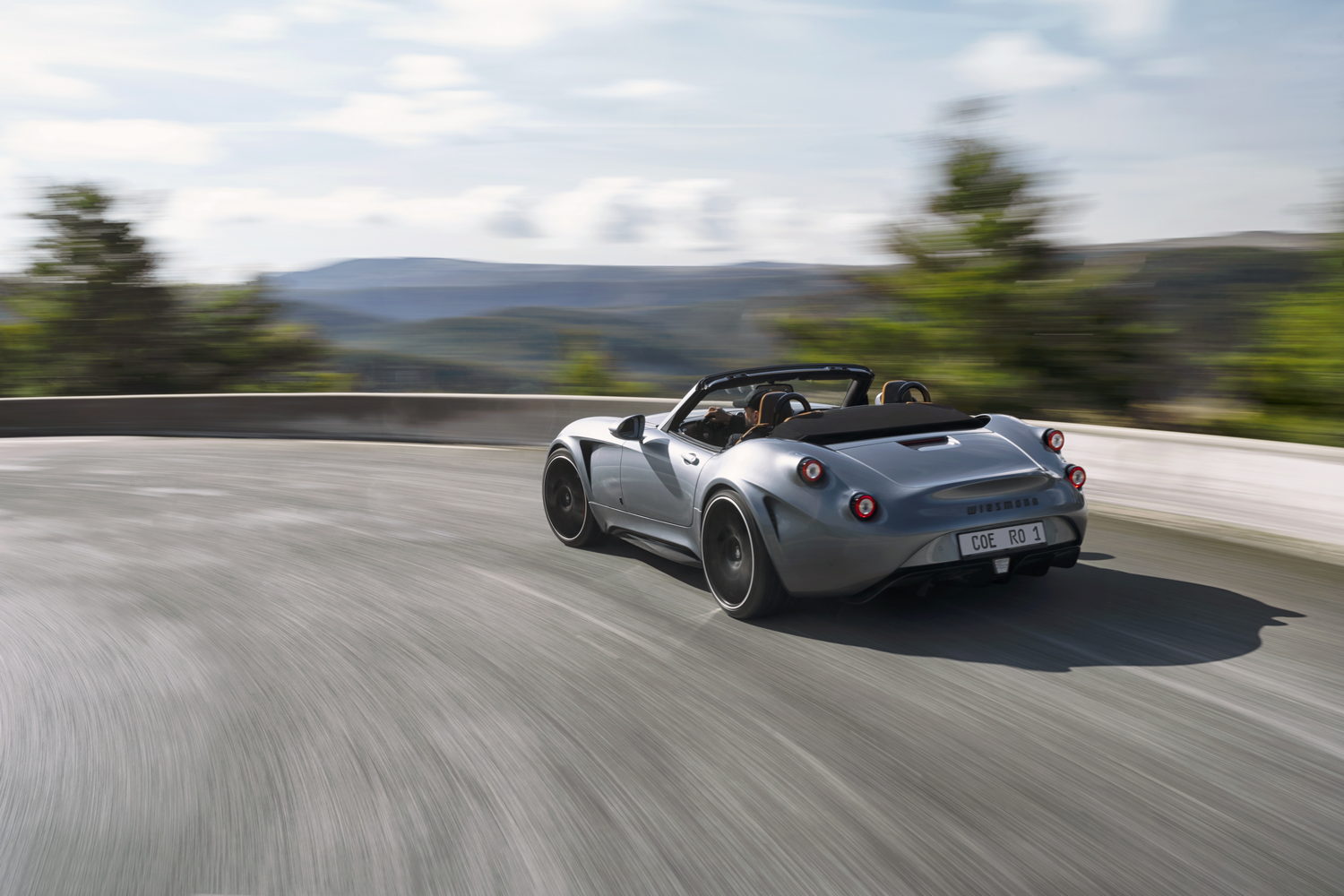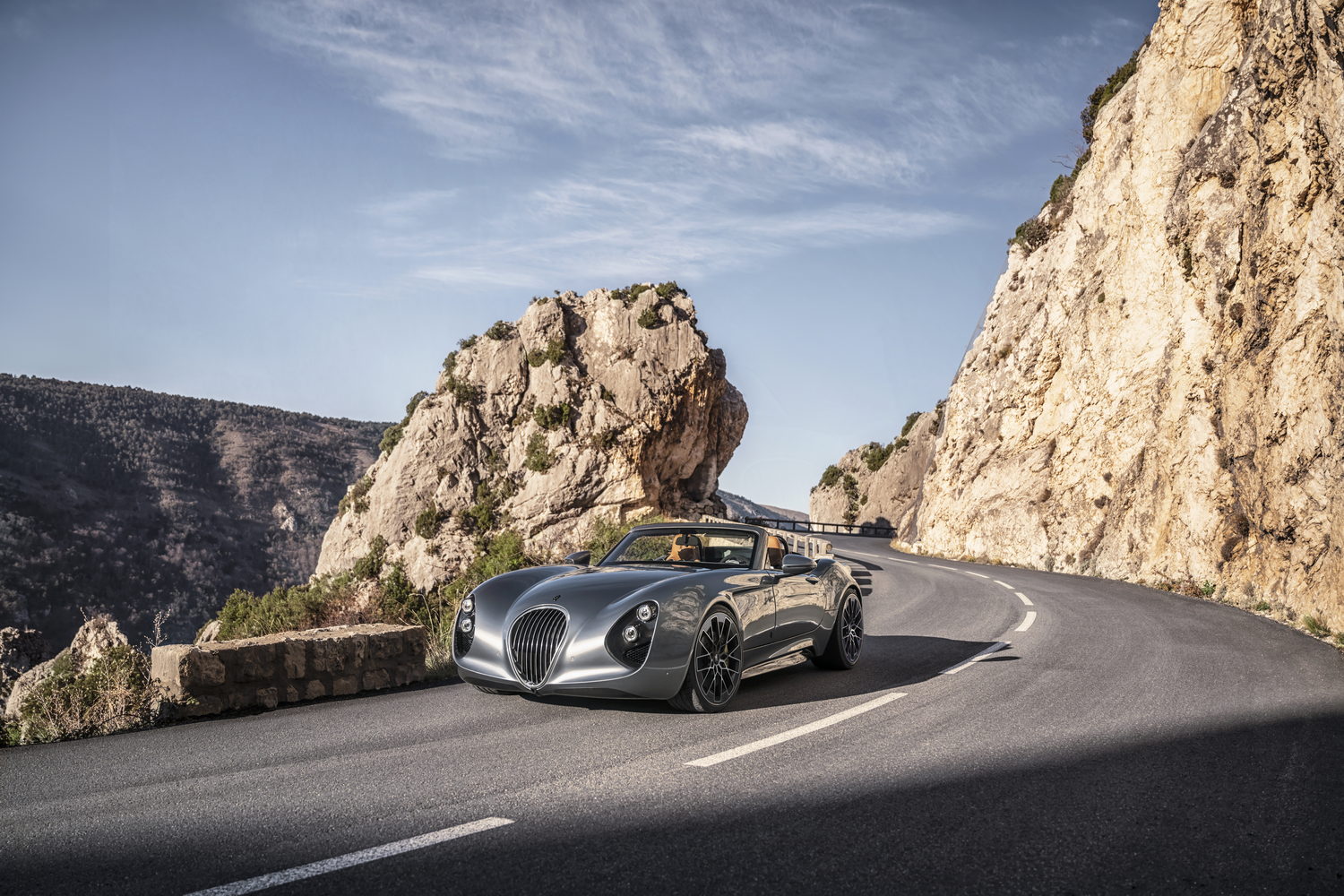Not heard of Wiesmann? Not surprising - outside of Germany, not many people have. Wiesmann makes a small number (just a few hundred) cars each year in its bright and spacious factory just outside Essen in Germany's Ruhr Valley industrial heartland. Since the company was first formed by brothers Martin and Friedhelm in 1988, those cars - two seat roadsters and coupes, every one - have used BMW power. Starting with a 231hp straight-six, Wiesmann's later models graduated to full-on, snorting 625hp twin-turbo V8s usually found in BMW's most powerful M cars.
Now though, Wiesmann is taking a dramatic turn into electric power. This is the Project Thunderball, and it's Wiesmann's first battery powered model. If all goes well, it will go on sale in late 2024 to take on the likes of Porsche's upcoming electric Boxster and Maserati's MC20 Folgore.
In the metal
What do you get when you take a blender, mix in a large gulp of 1960s Austin-Healy, two measures of AC Cobra, a dash of Jaguar C-Type and press the 'on' button? You get a Wiesmann.
Suggesting that the Wiesmann is a mishmash of other cars' styling is perhaps a little unfair. There are clearly influences, but this is no kit-car. It's built on a bespoke bonded-and-riveted aluminium chassis, and that body is now all made of carbon fibre (the older ones are glass-fibre). It's wider than the older Wiesmann models, too, cutting the measuring tape at just over two metres across the mirrors, and that is to its advantage as it looks more muscular than its predecessors, more graceful, while the cut-outs for the small, round projector LED lights look more carefully crafted than those of previous models.
The grille is cut neatly from a single piece of aluminium and, while the small round lights of the rear have a slight parts-bin look to them, they will be replaced in production with items that are more bespoke to the Wiesmann. Equally, but rather more sadly, the elegant duck-tail swoop of the Thunderball's boot lid will be replaced by an electrically-deployed spoiler.
Inside, as with the exterior, the Thunderball keeps to Wiesmann tradition, but does it with a modern twist. That extra width means there's actually space to get comfortable, while the traditional analogue gauges set, angled towards the driver, have been kept, but are now augmented by digital screens in the centre of the dash and behind the steering wheel (that steering wheel is also a temporary fix for this prototype - a proper Wiesmann item is being designed). It's rather charming to see information such as battery charge and temperature displayed on a proper analogue clock. Up with this sort of thing. Everything is mounted in a single carbon-fibre moulding, which looks gorgeous.
There's no real luggage space as such. There is a 180-litre 'frunk' under the vast clamshell bonnet, but there's no storage behind the cabin, at least until Wiesmann gets around to designing a coupe model.
Driving it
If you're expecting this to be a tale of dissolving tyres into the mild November air of the Ruhr basin with 1,100Nm of torque melting the rear Michelins, you're going to be disappointed. Project Thunderball is currently a one-off prototype, and I'm driving with Guenther Riedl, CEO of Roding - a Munich-based company that is supplying Wiesmann with batteries and electric expertise. "This car has to be safe to work on, above all else" he tells me. "So the battery is not yet at full power." So no 680hp for us today. Bah.
What we do have is around 437hp, though, so we're not exactly in limp-home mode. Even with that big battery, the Wiesmann weighs a trim 1,775kg - about the same as a V8 Jaguar F-Type - so 437hp is plenty. Performance is wonderfully brisk, and actually all the better for not arriving all at once in neck-snapping suddenness. You can feed the Thunderball's power in progressively, and it's so confidence inspiring that I'm soon sling-shotting out of the corners and easily catching the V8-engined Wiesmann MF5 that's leading our convoy. If it's this quick in de-tuned mode, it's going to be utterly fantastic when finished, as long as Wiesmann resists Tesla-style all-or-nothing performance curves.
The chassis is absolutely brilliant. We're used to prototypes looking and feeling unfinished inside, and rattling and squirrelling their way around corners. Not the Wiesmann. Aside from some tuning and tweaking needed to sort a small bit of fidget over high-frequency bumps, the Thunderball feels agile, planted and hugely engaging. Hopping from older V8 models and into the Thunderball, you can clearly feel the lineage. There's the same sense of lightness (even in the heavier EV), and the same sense that fluidity has been the priority, not the sort of flat-body-in-corners that usually means a rock-hard ride.
The Thunderball is firmly sprung but deftly damped, so it feels purposeful, but flexible too. The steering is lighter and quicker than on the older V8 models, but it's full of feel and - again - really confidence-inspiring. Again, again; you have to remember that this is a one-off prototype, but it's not long before I'm threading the Wiesmann easily and enjoyably through a series of narrow corners, bordered with trees. There aren't many one-offs you'd feel this inclined to press on with.
The battery is a huge t-shaped item that runs from under the bonnet through the cabin inside the massive transmission tunnel. It's this layout that has allowed Wiesmann to keep a low seating position, something that CEO Raheen Berry was adamant about - he didn't want drivers perched up above a flat 'skateboard' battery. With 83kWh of useable energy, it's predicted to give the Thunderball a one-charge range of 500km. It'll charge quickly too, up to 300kW on a DC rapid charger, and up to 22kW on AC power.
What you get for your money
The Wiesmann won't be cheap, but neither will it be outrageously expensive. Before taxes, it should cost around €300,000. That's about the same as one of the V8 models, although of course you'll be able to increase that by adding bespoke paint, leather and trim. Figure on an Irish price of around €450,000 if anyone decides to import one (Berry is keen to bring one over, incidentally. He's UK born with Indian ancestry, but has Irish grandparents and spent many childhood summer holidays in Kinsale).
Right-hand drive production is being spoken of, and is certainly possible, but isn't 100 per cent confirmed yet. Rivals such as the upcoming Porsche Boxster EV will be more affordable, and Maserati's MC20 Folgore will be a similar price, but neither will be able to match the rarity value nor the bespoke build of the Wiesmann.
Summary
The Project Thunderball is still a one-off, and it's made by a small company of which few outside Germany have heard. That should put it in the 'vapourware' category of many much-ballyhooed small-volume sports cars. Which re-invention of TVR are we on now, for instance?
However, that's a misconception that does Wiesmann a disservice. It's actually something of a household name in Germany (comparable to Morgan in UK terms) and has a loyal and wealthy customer base. It's a properly engineered vehicle that looks, feels and drives fantastically well even in engineering prototype form. If Wiesmann - and admittedly it's a big if - can jump through all of the varied and expensive hoops between now and production, it could be a devastatingly brilliant electric sports car, with a potentially brilliant mixture of performance, range and quality. Let's hope so. This is a car that, on this basis, deserves a chance.


